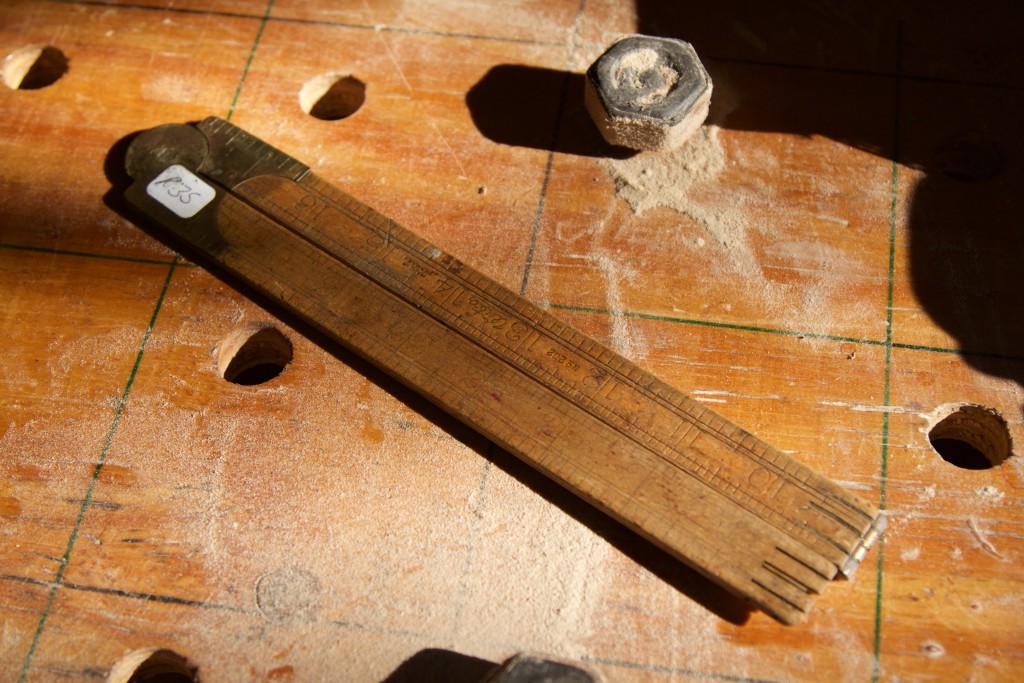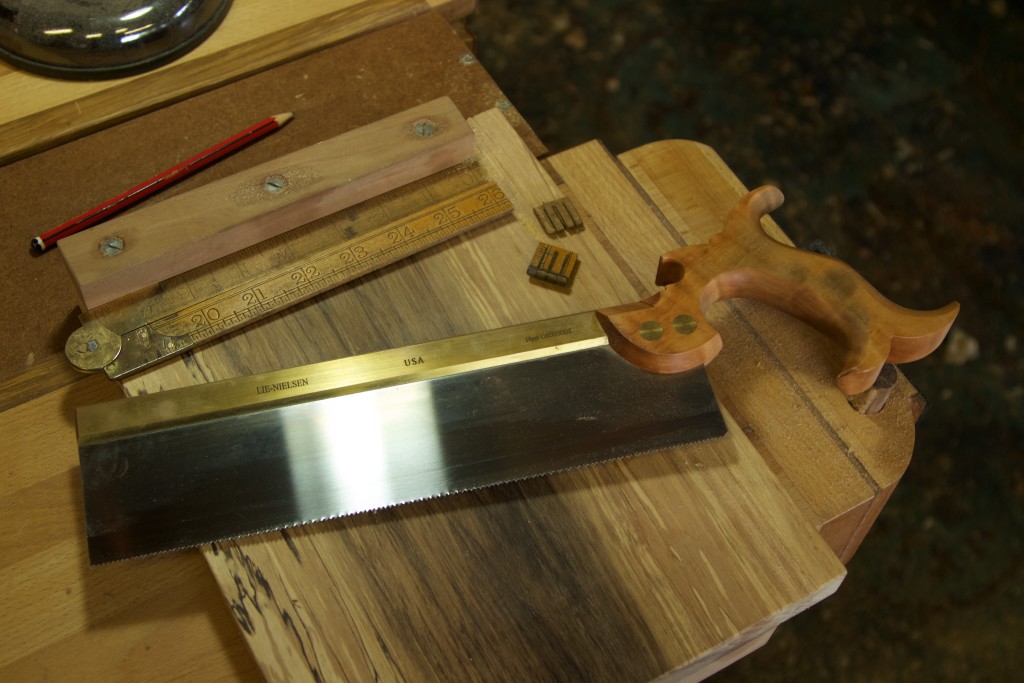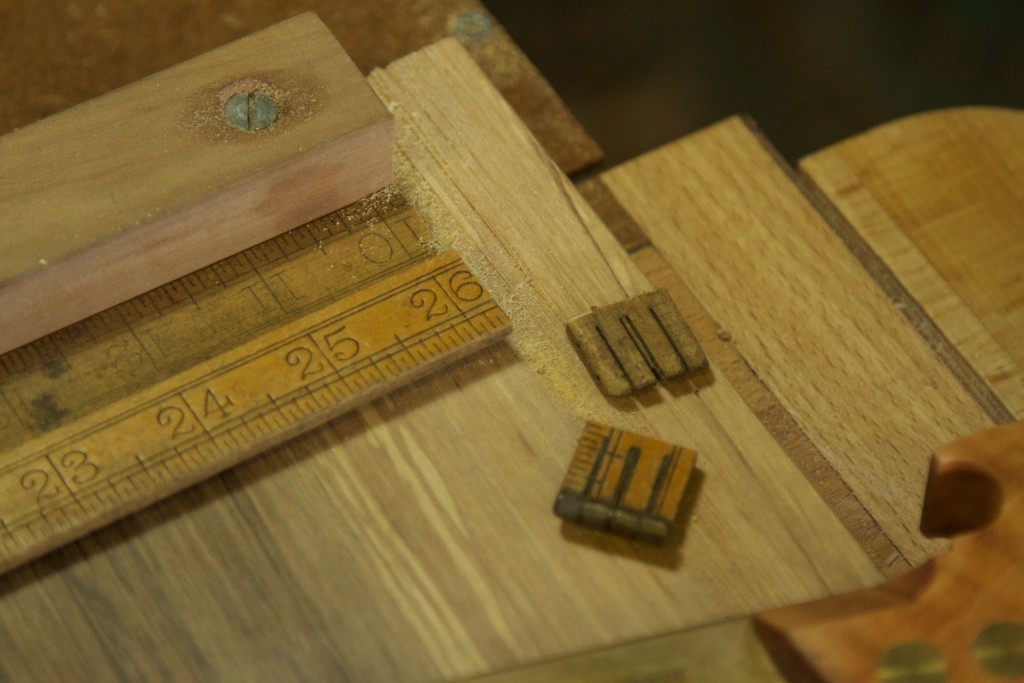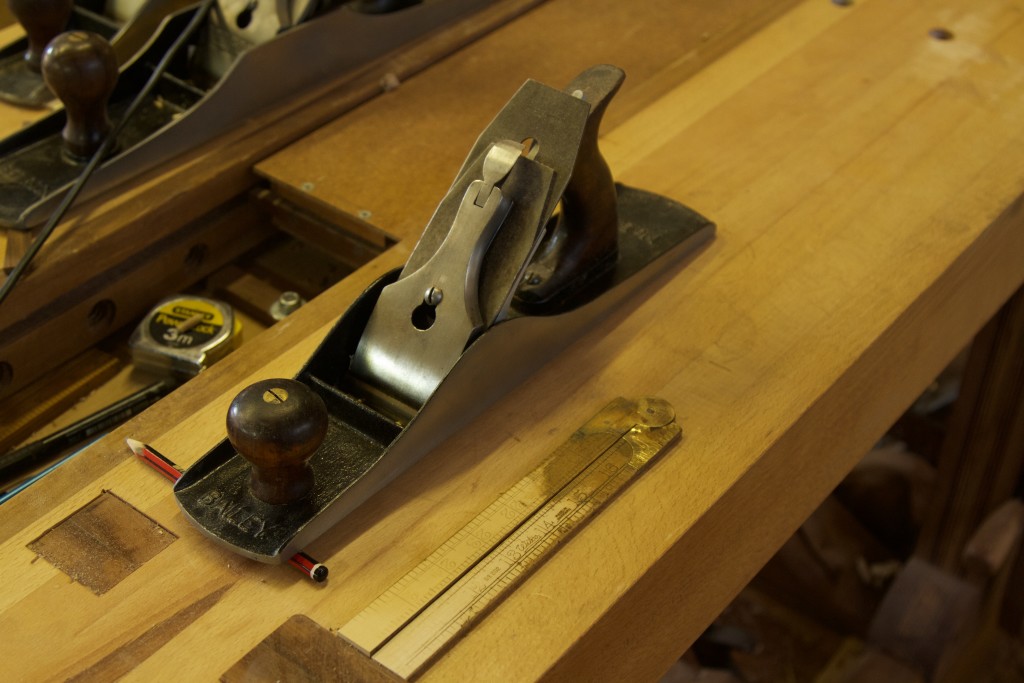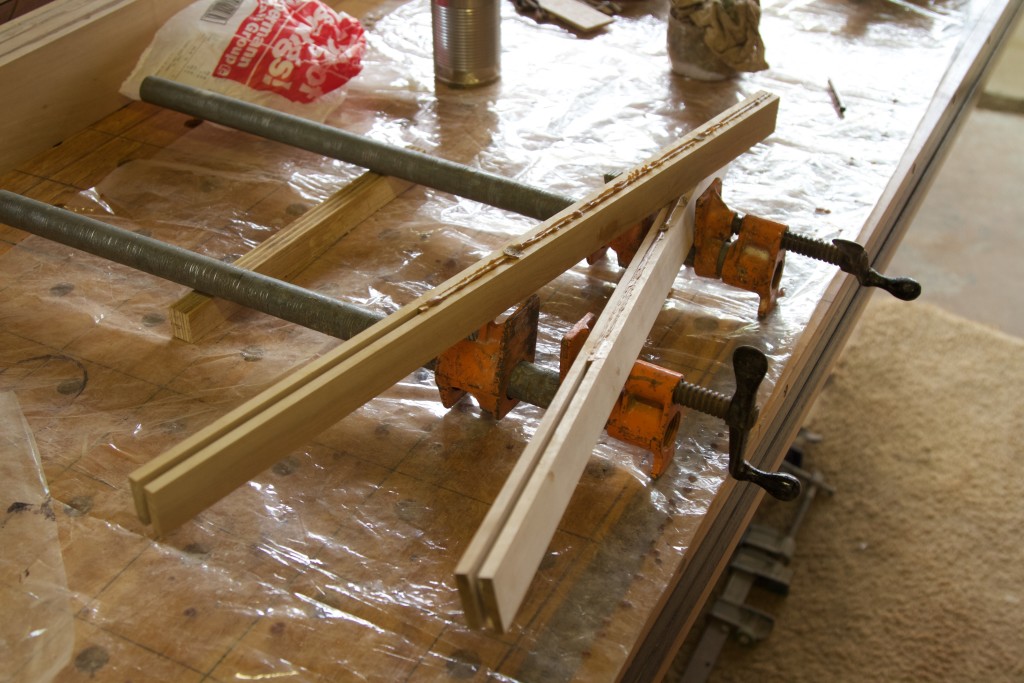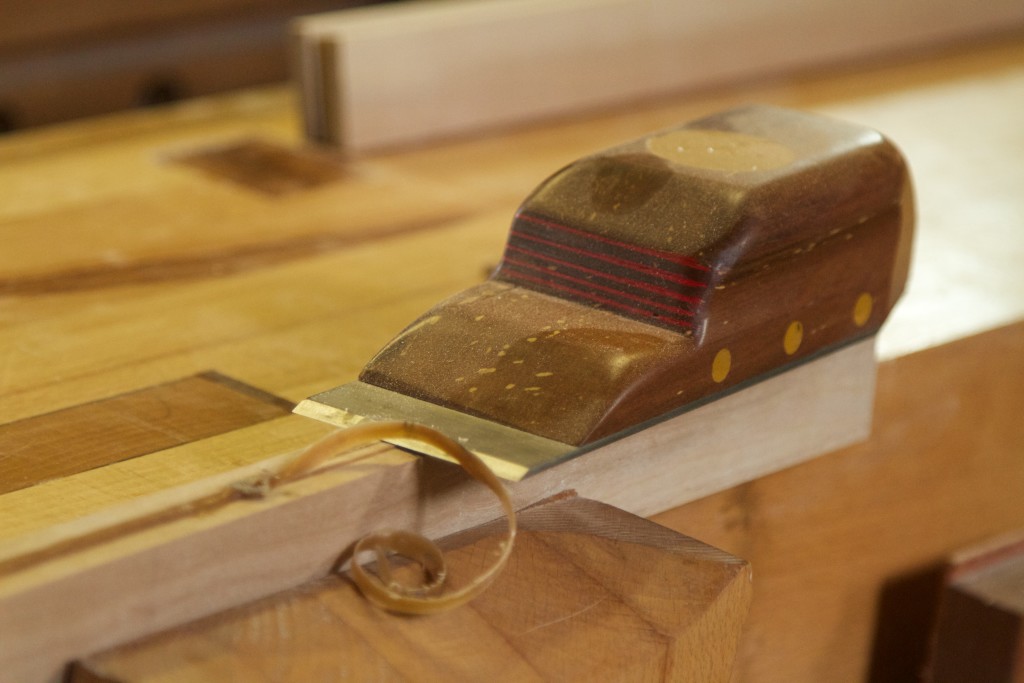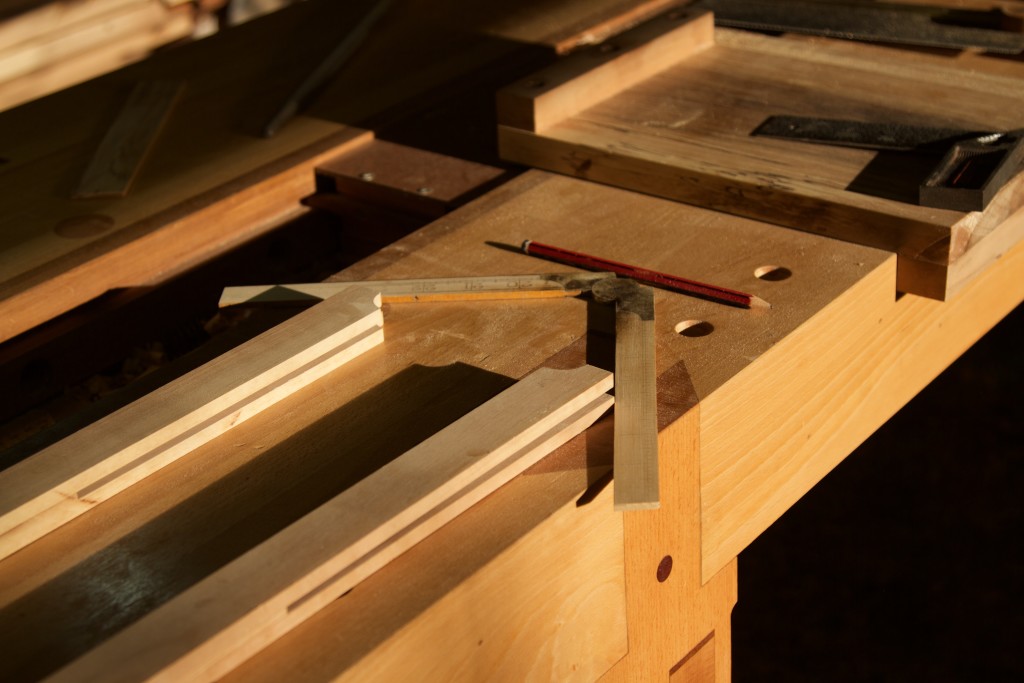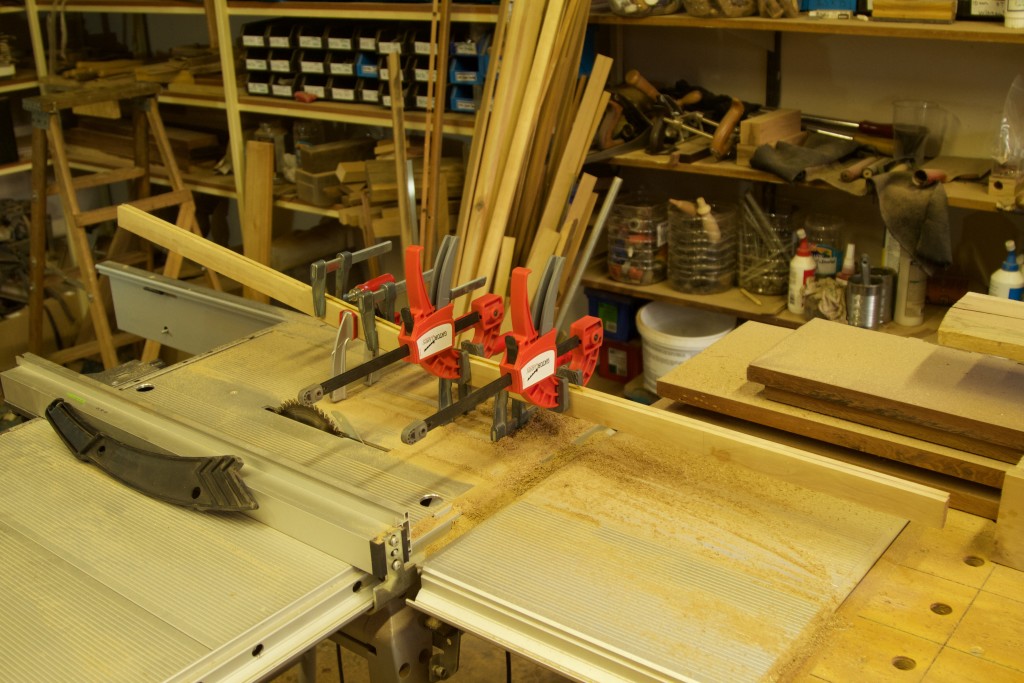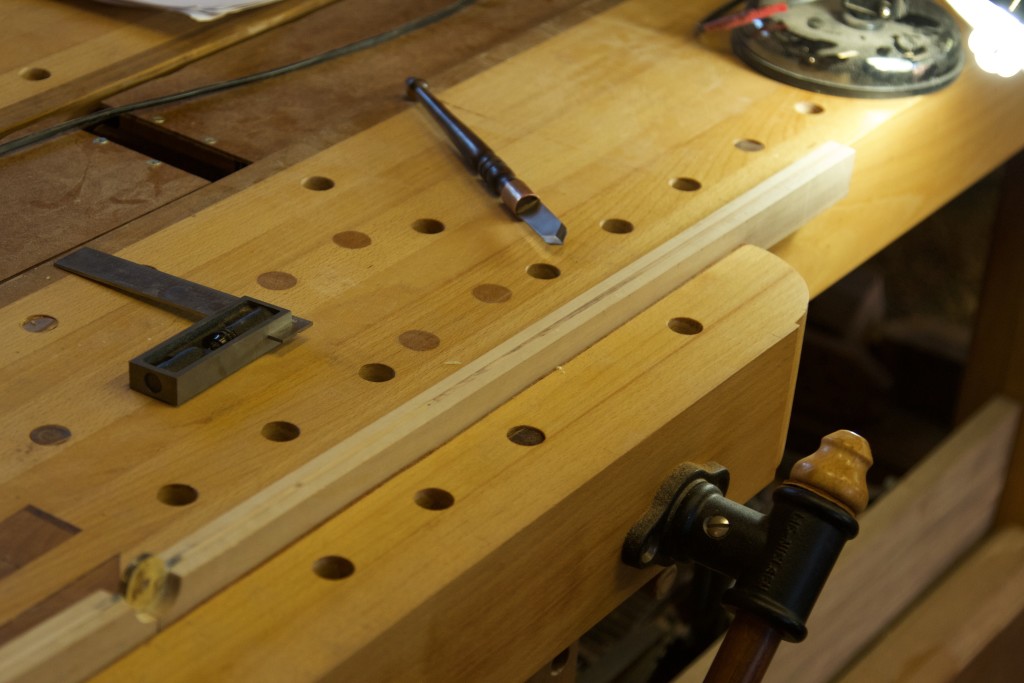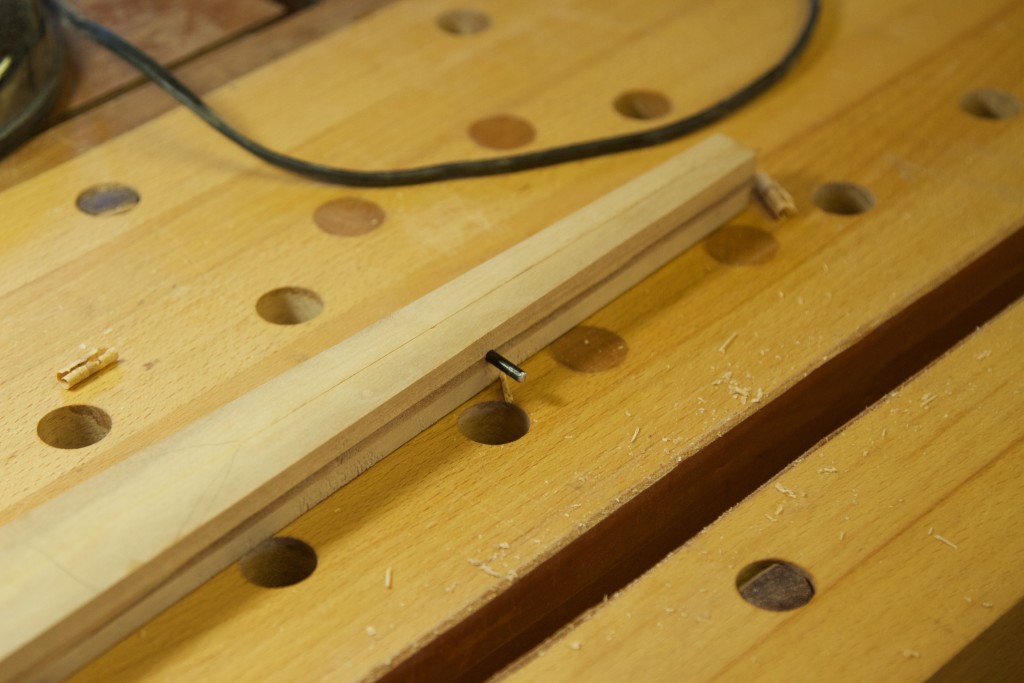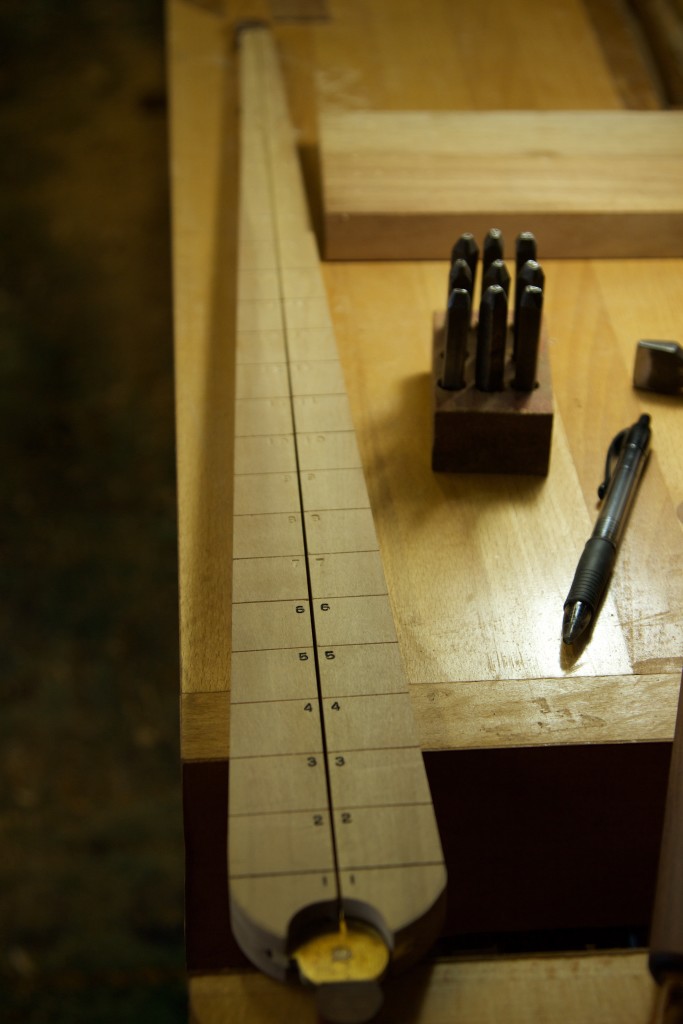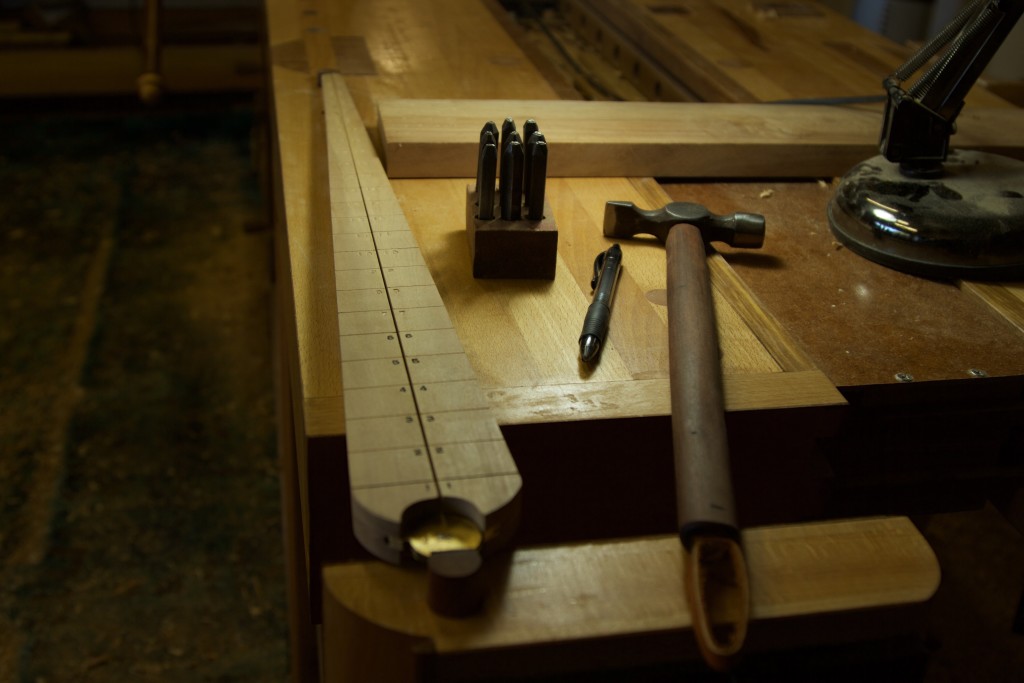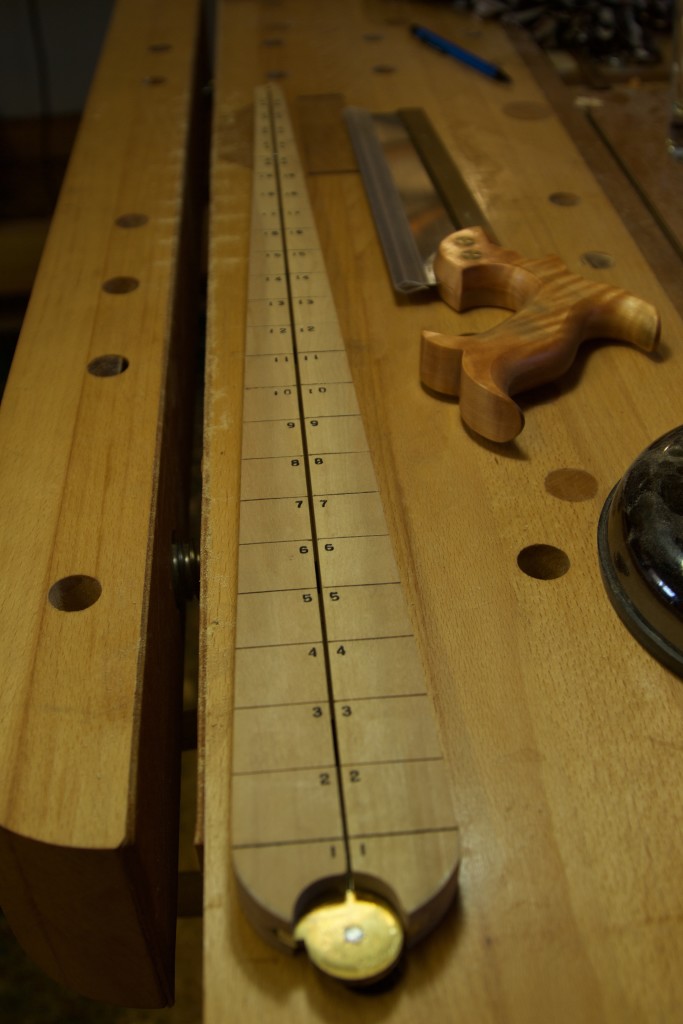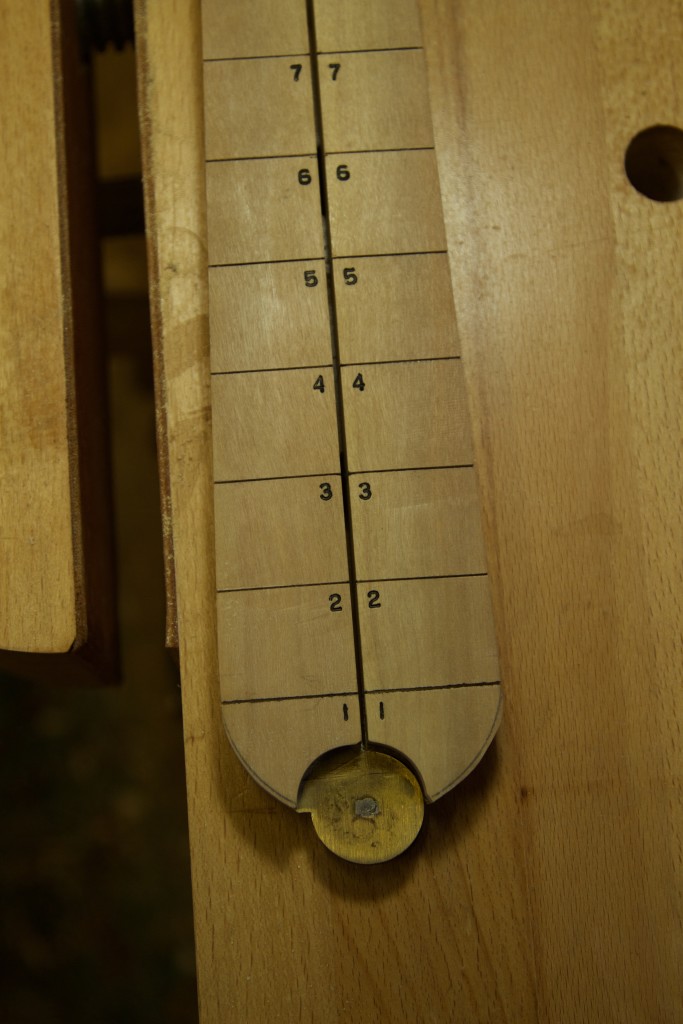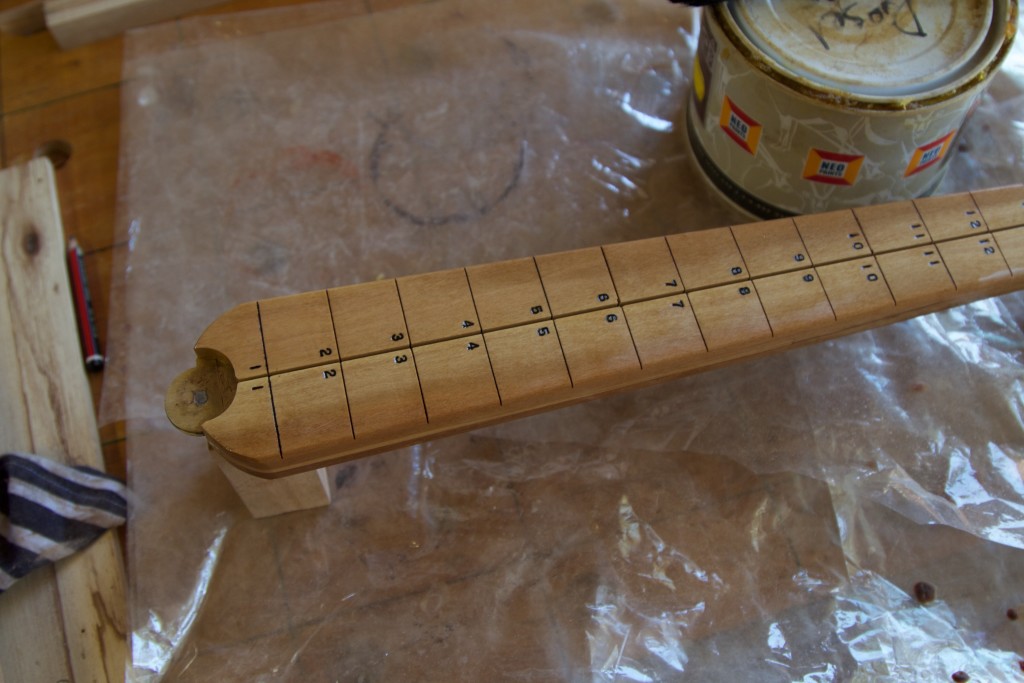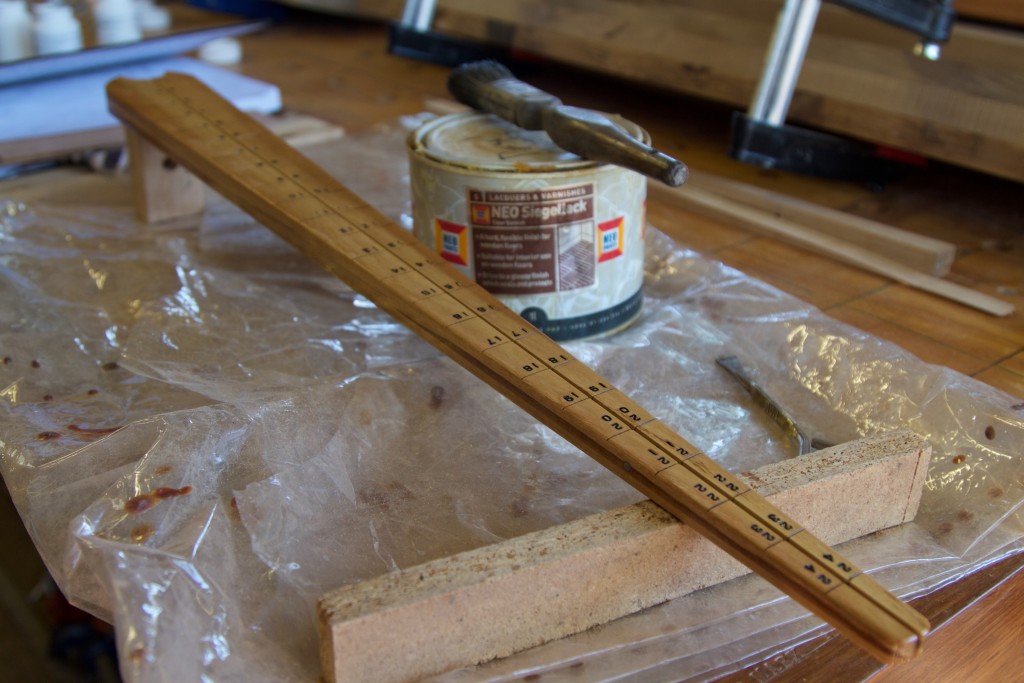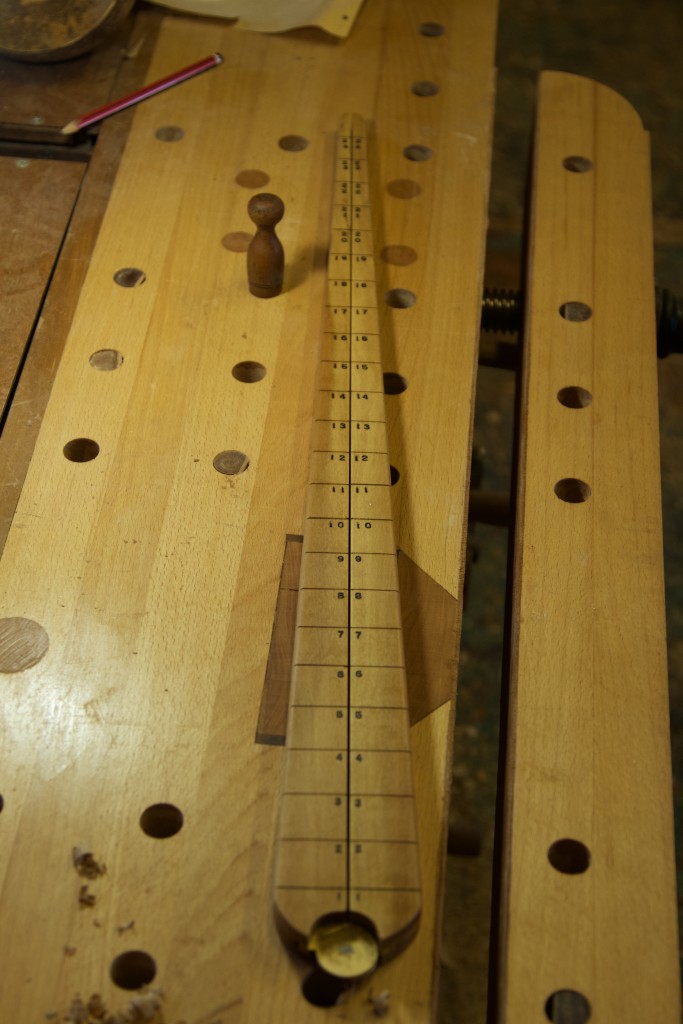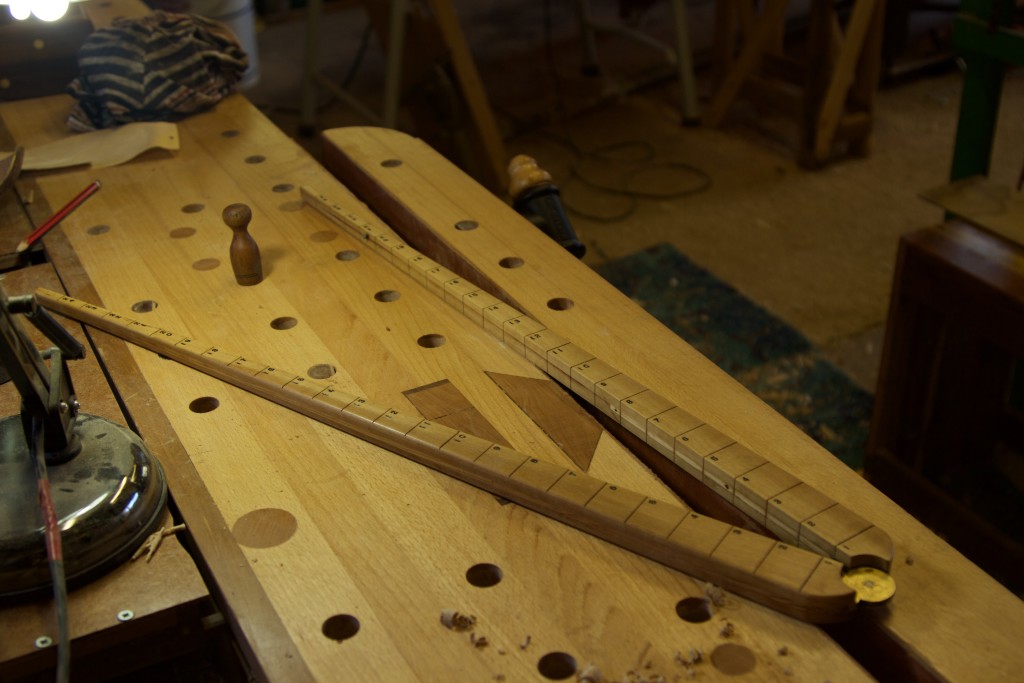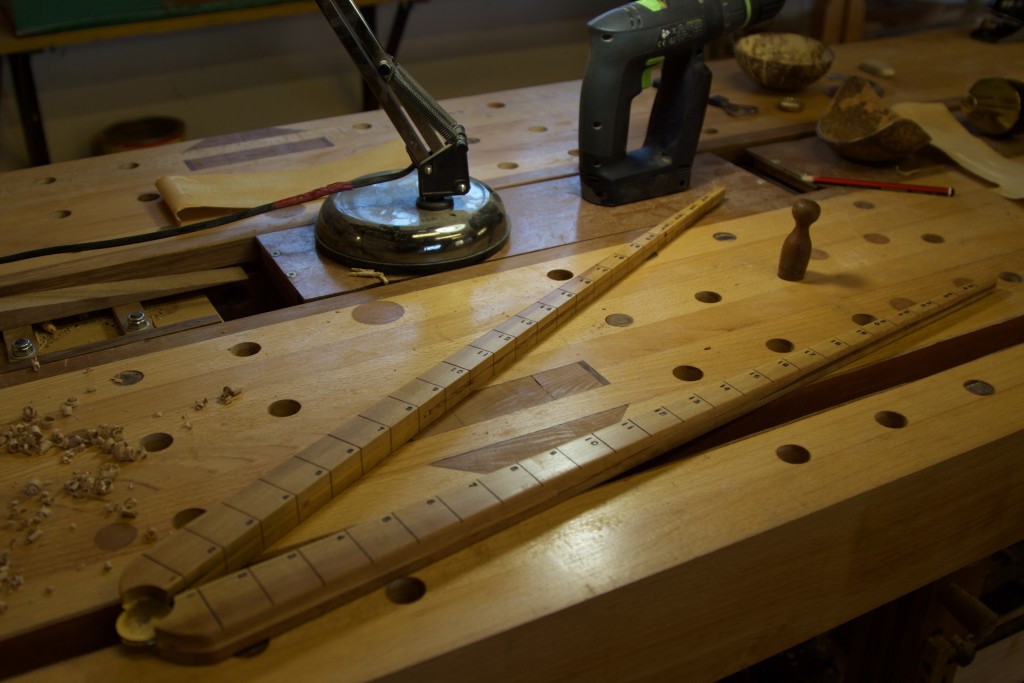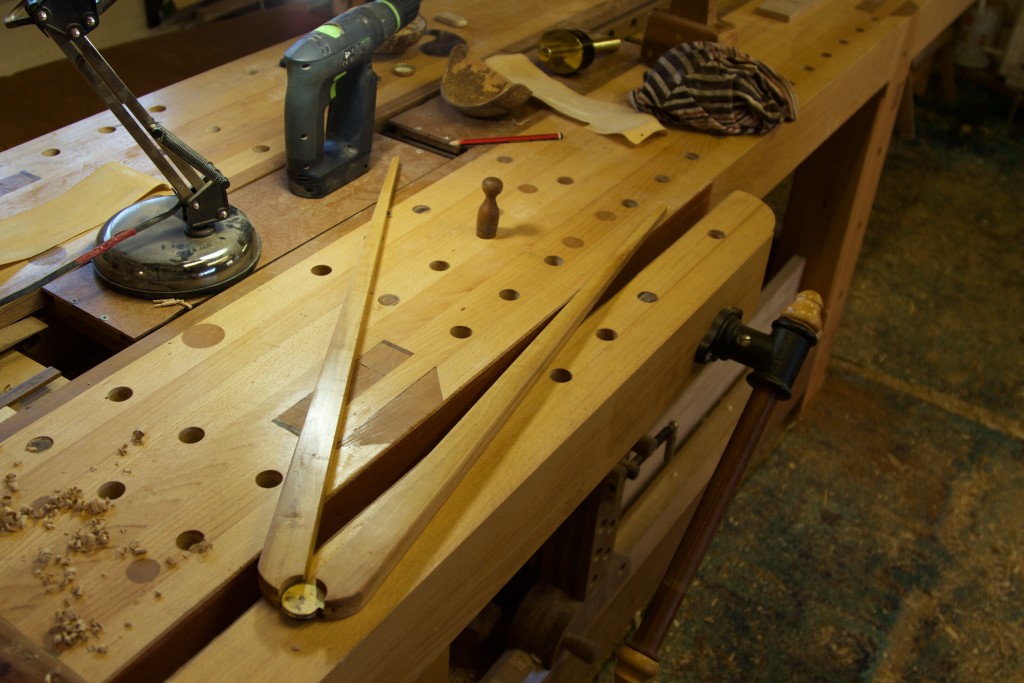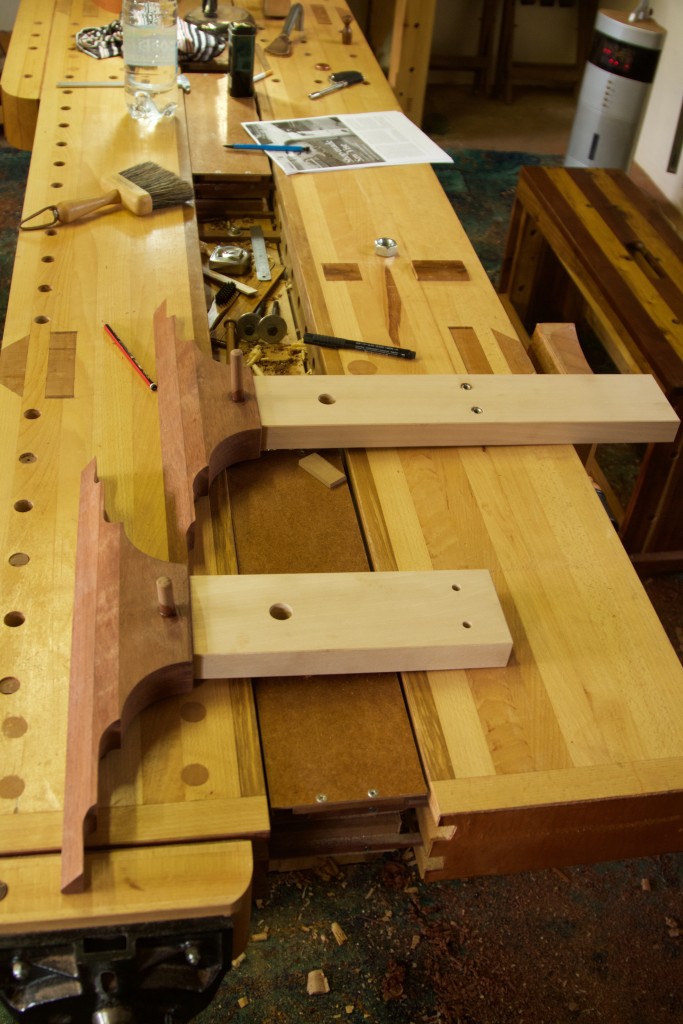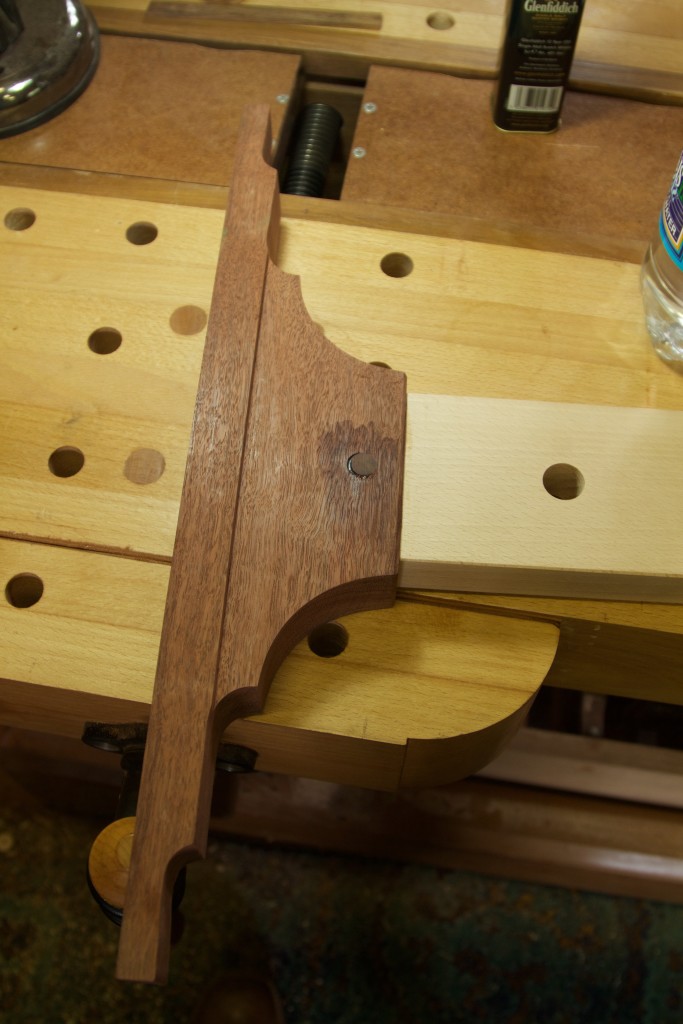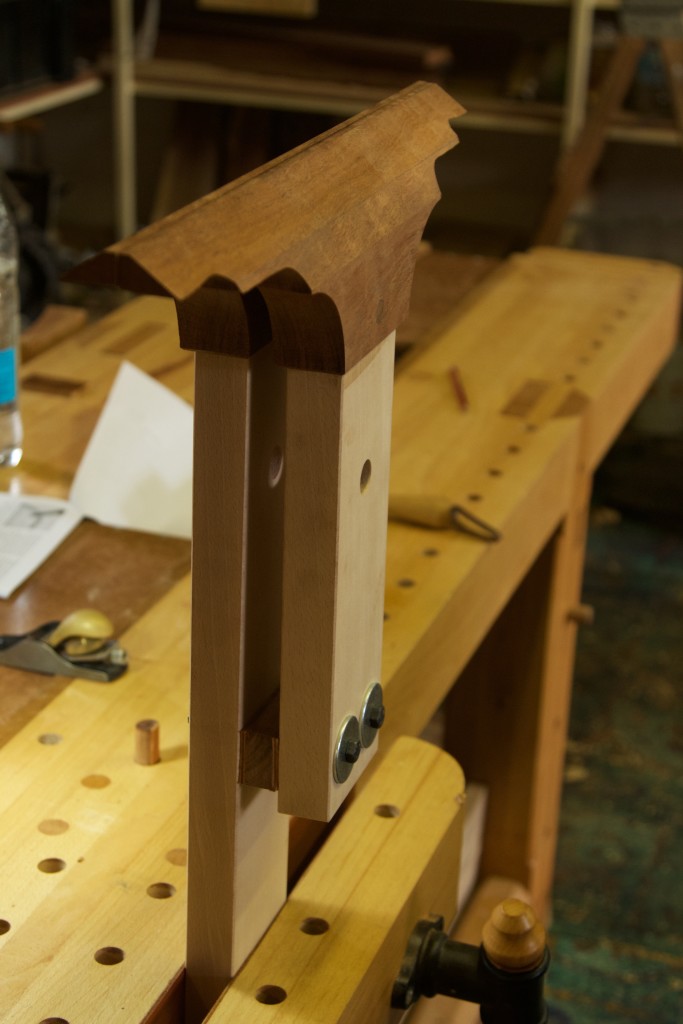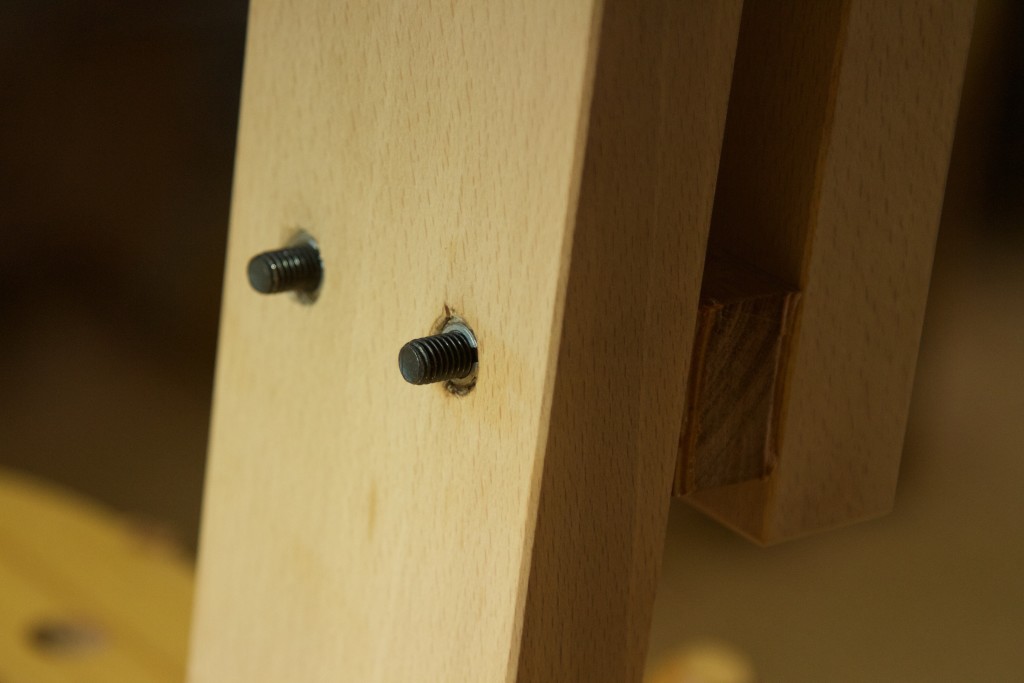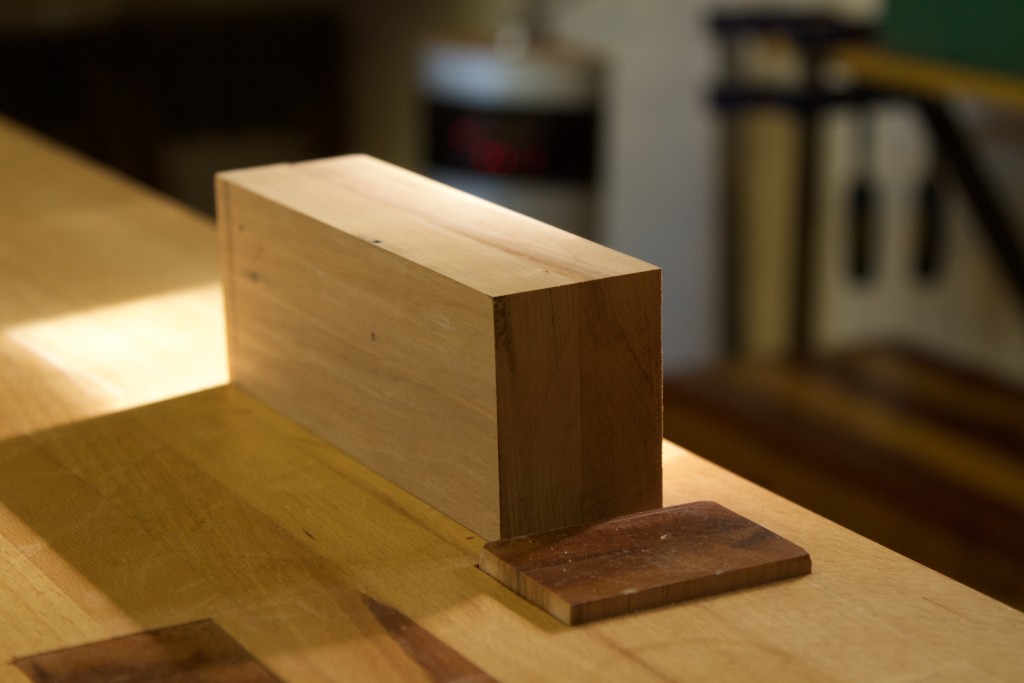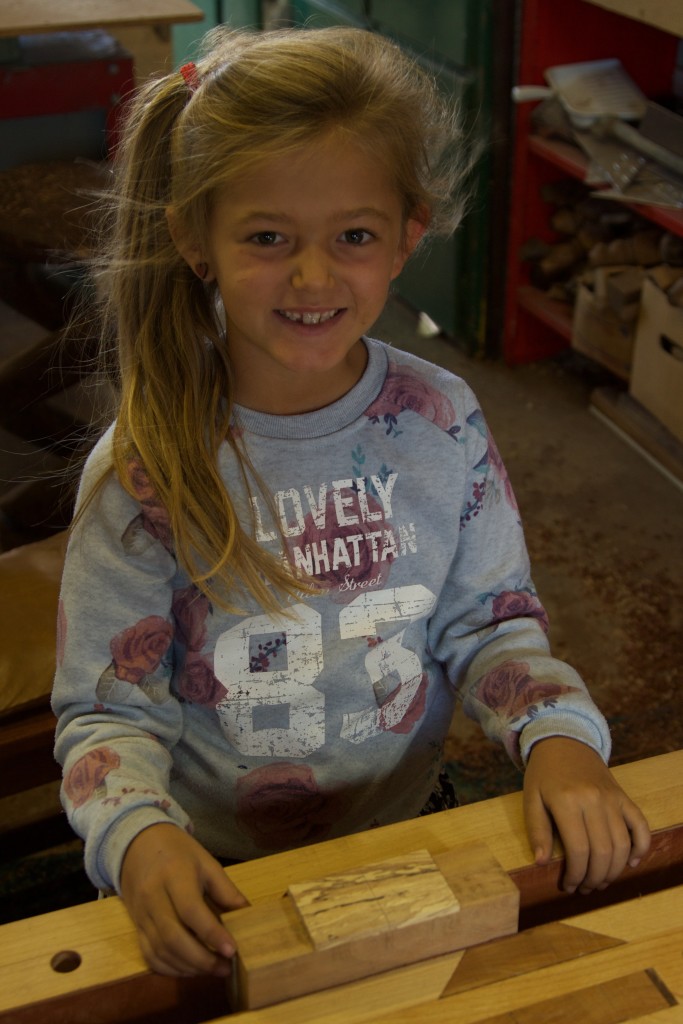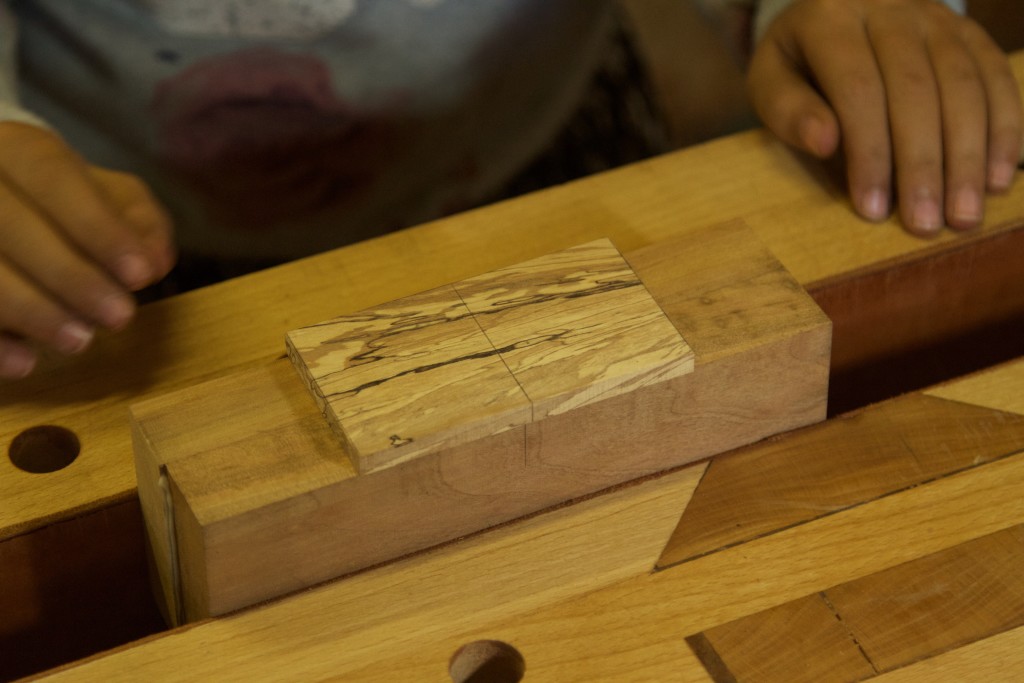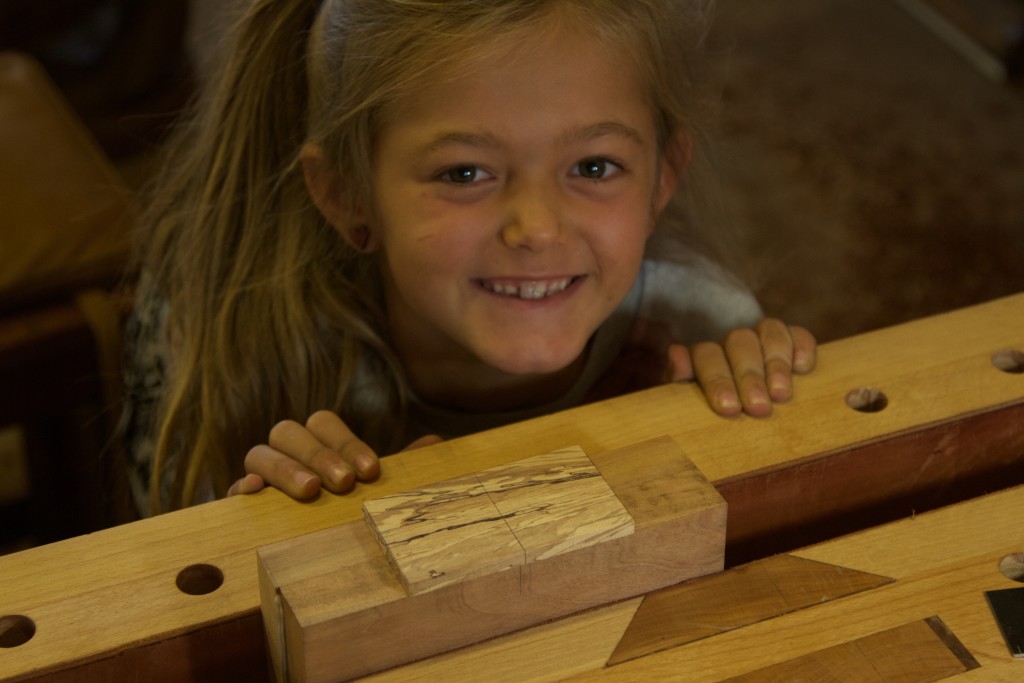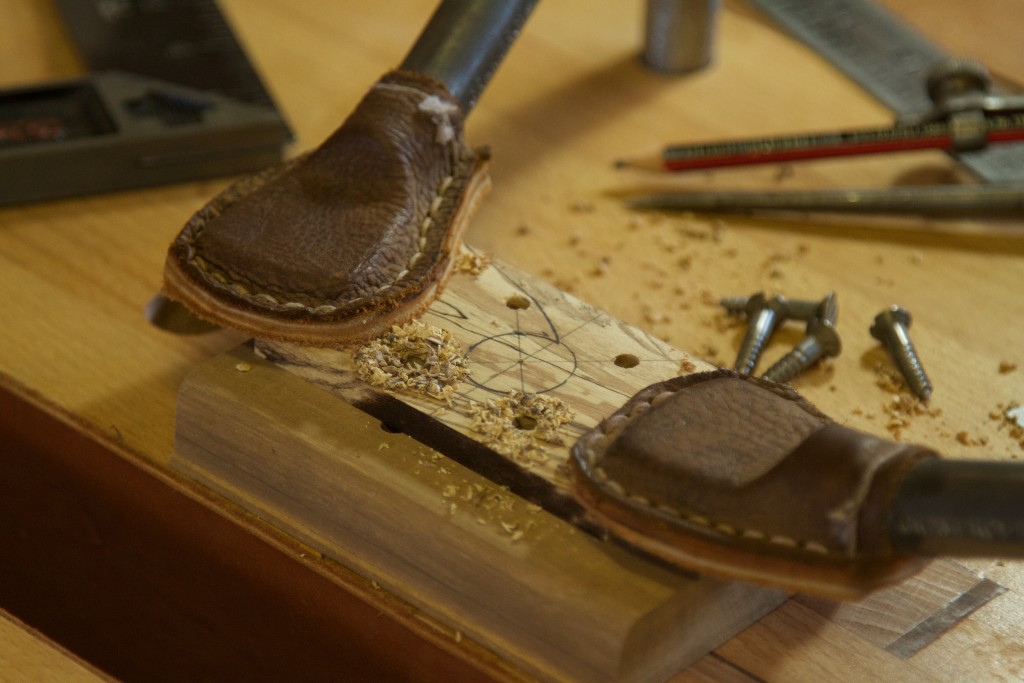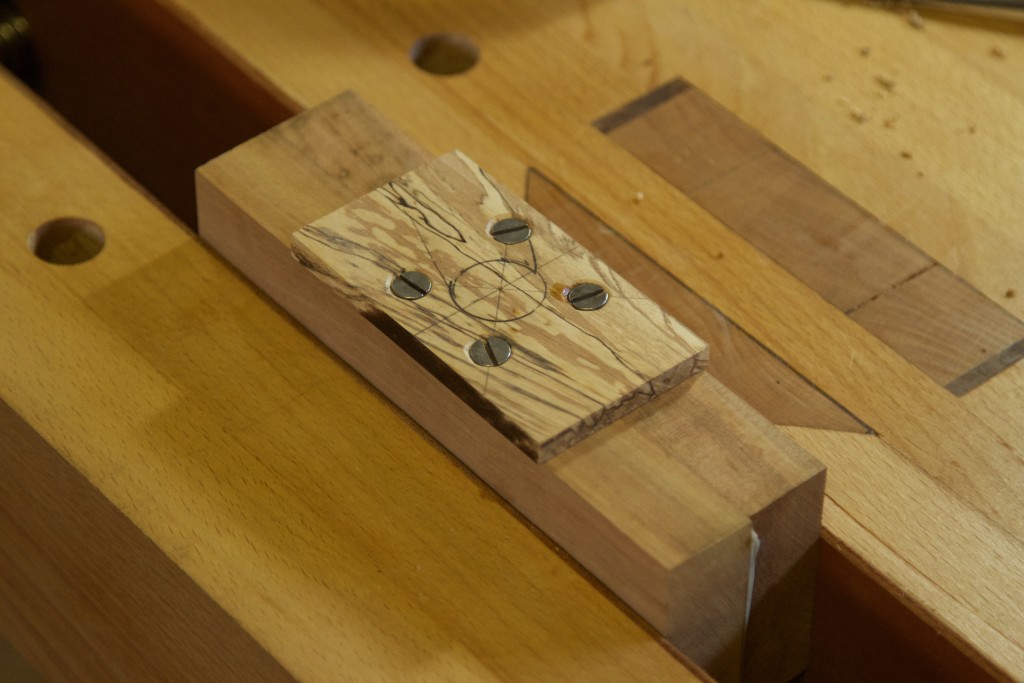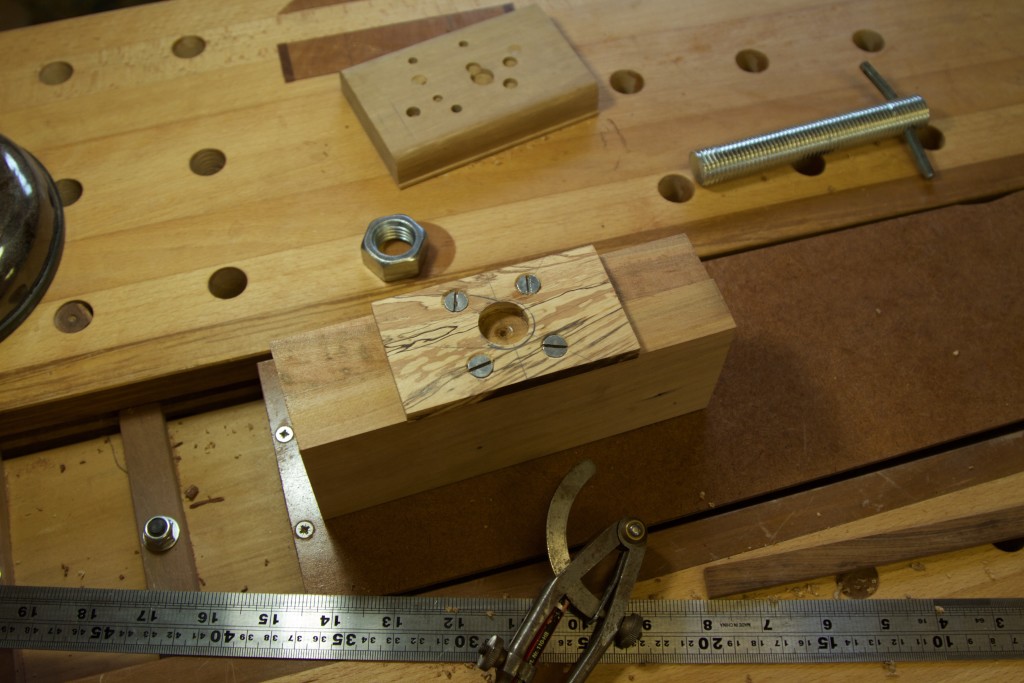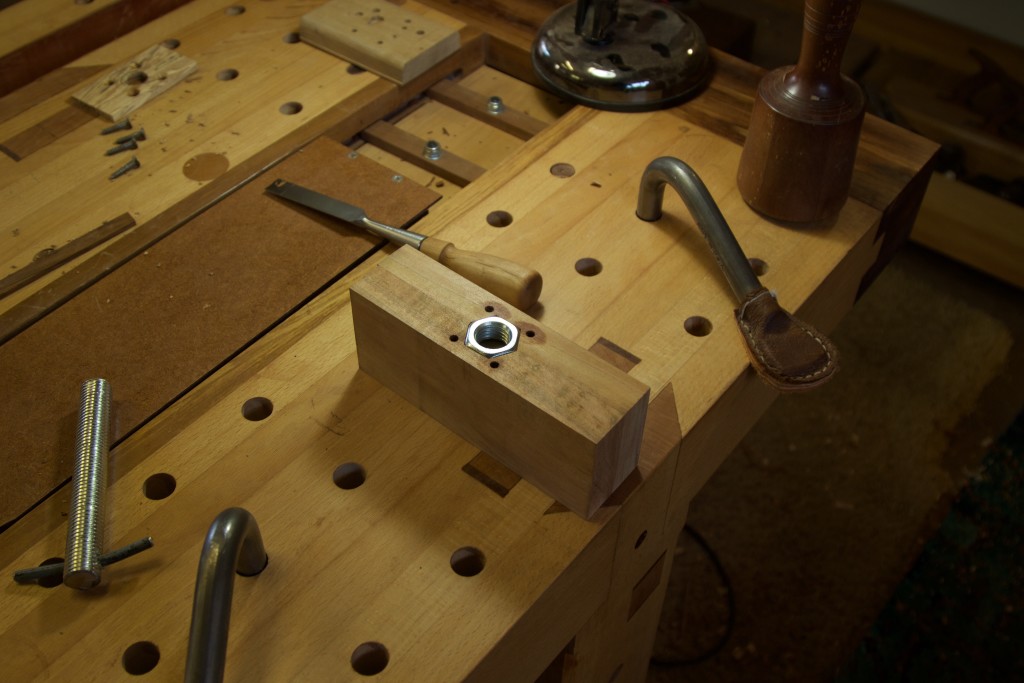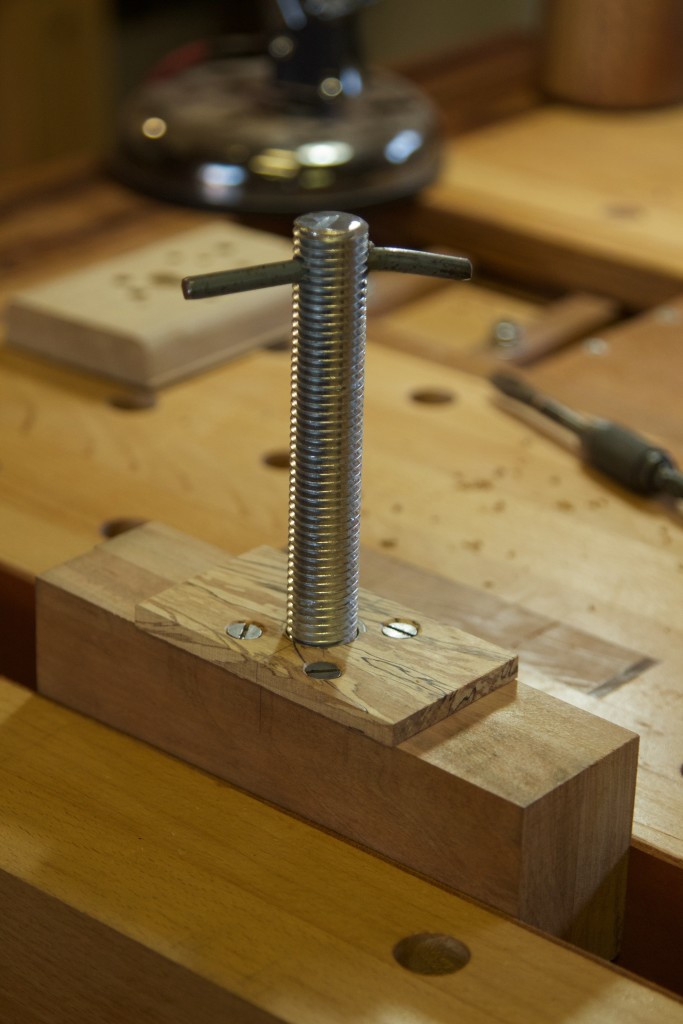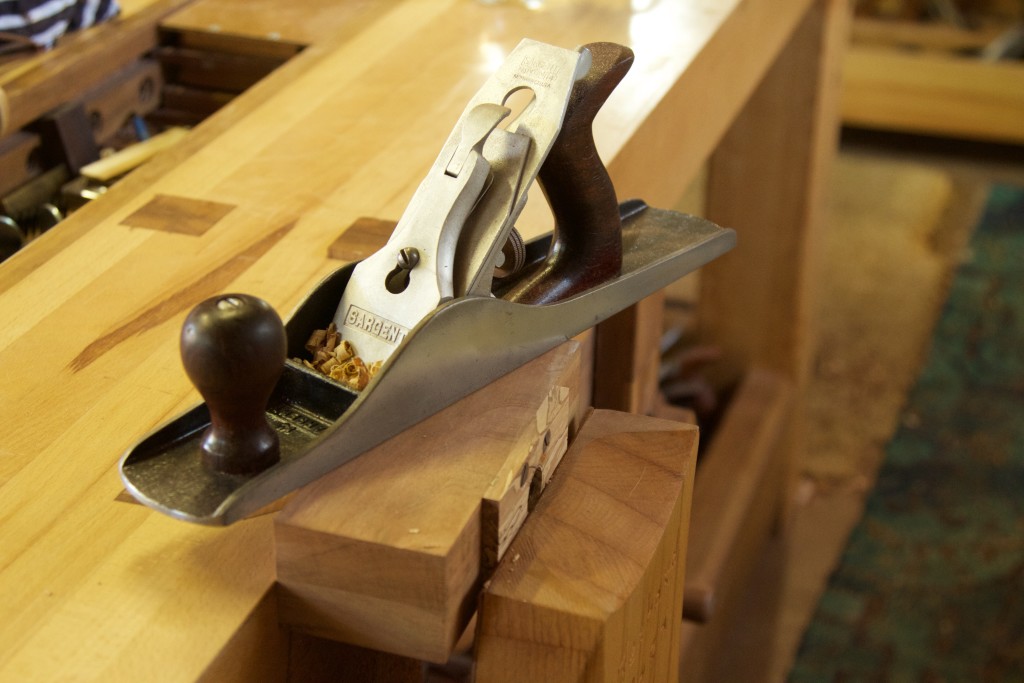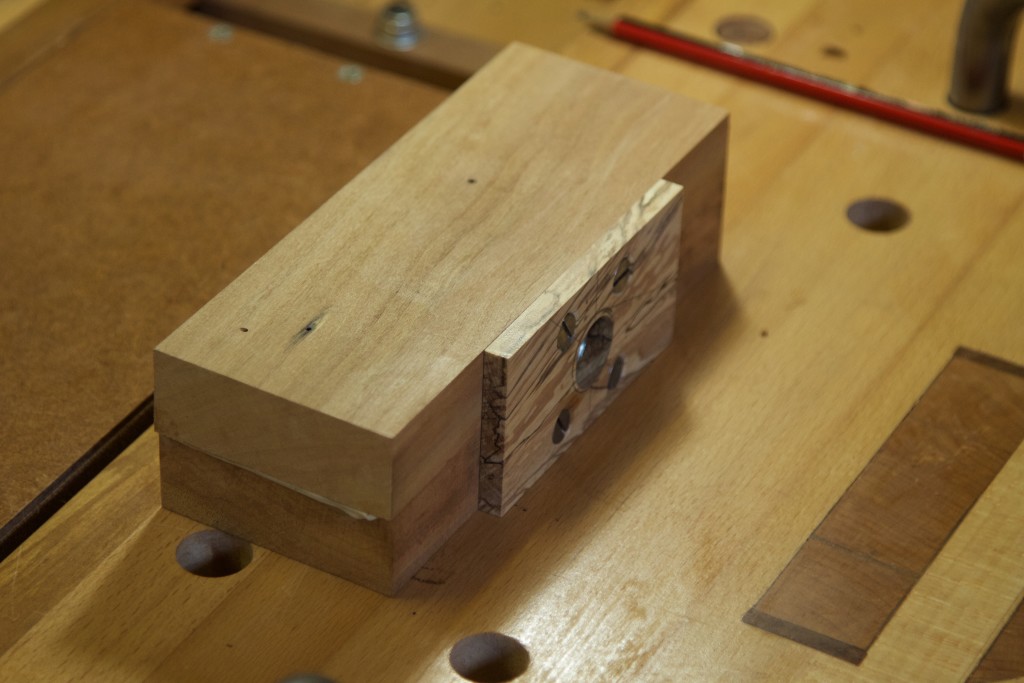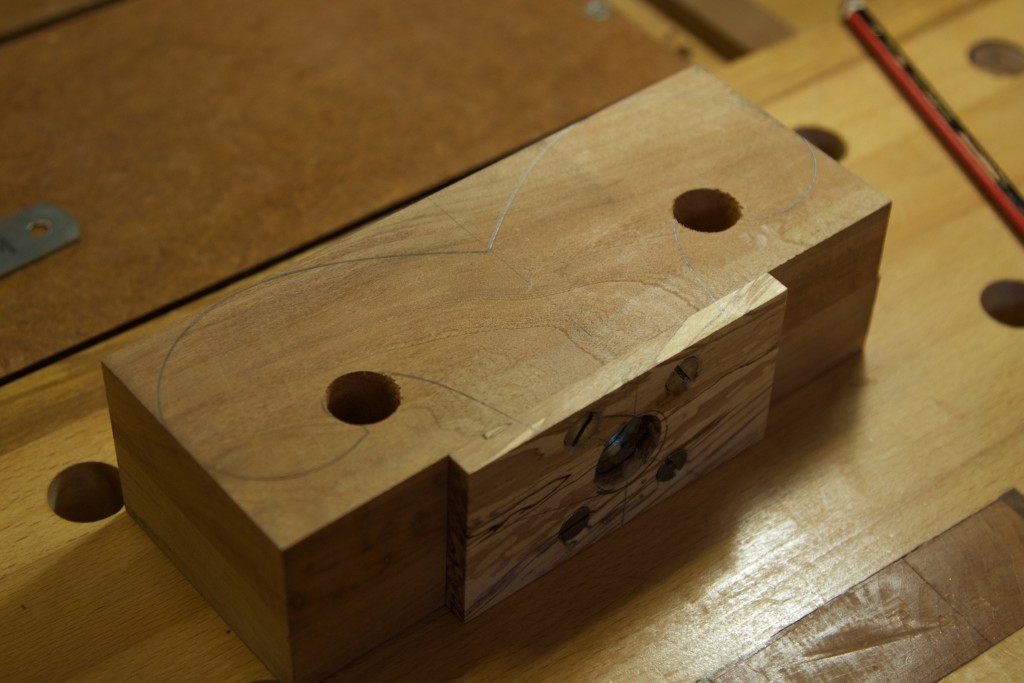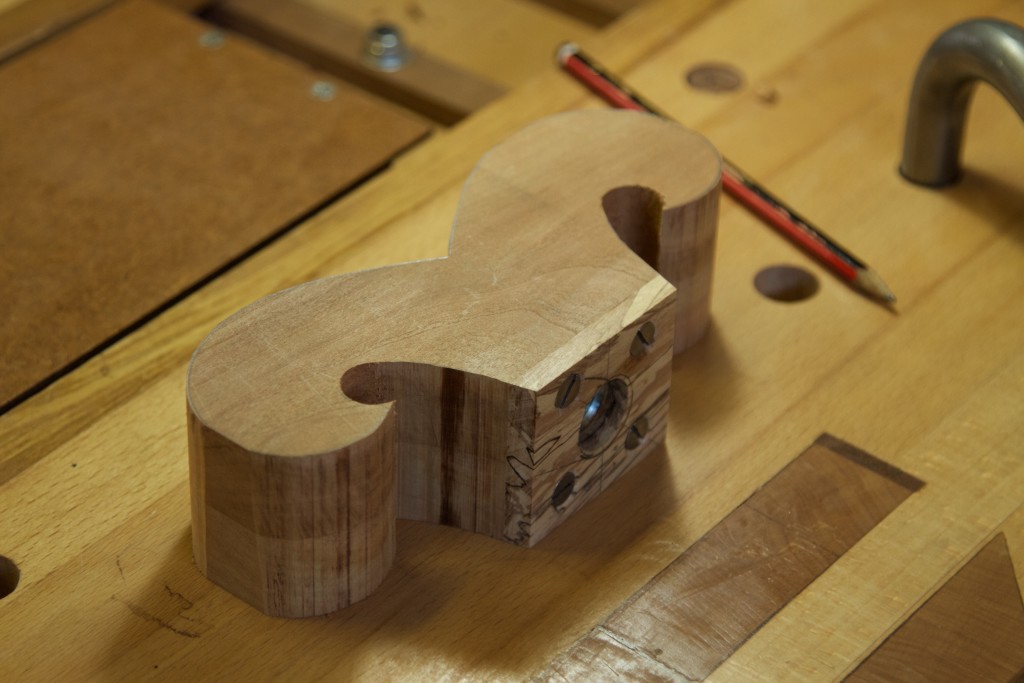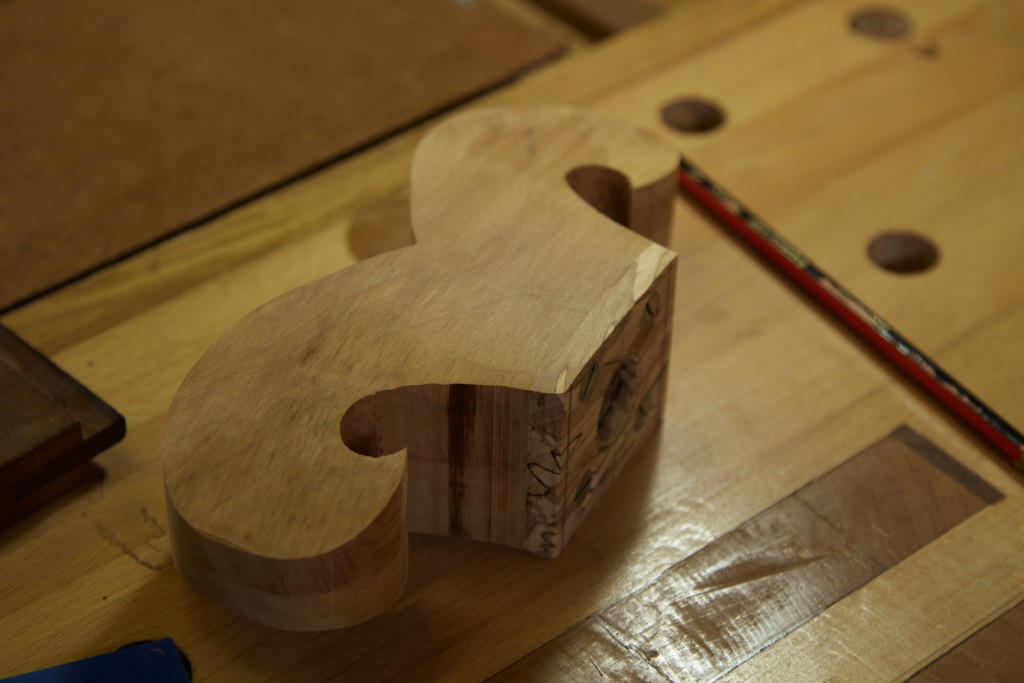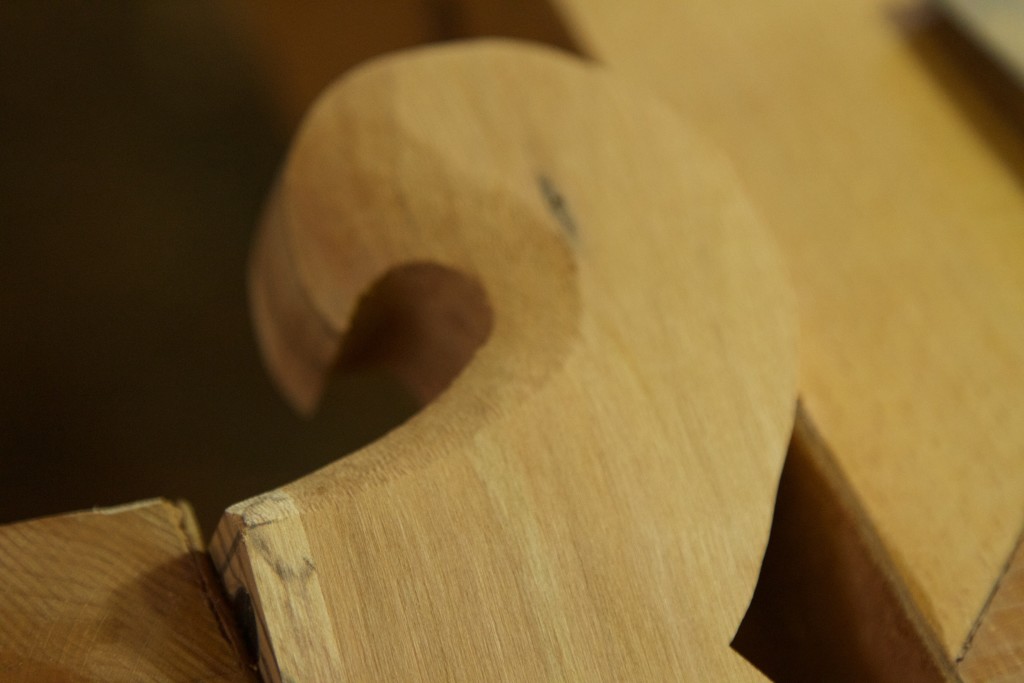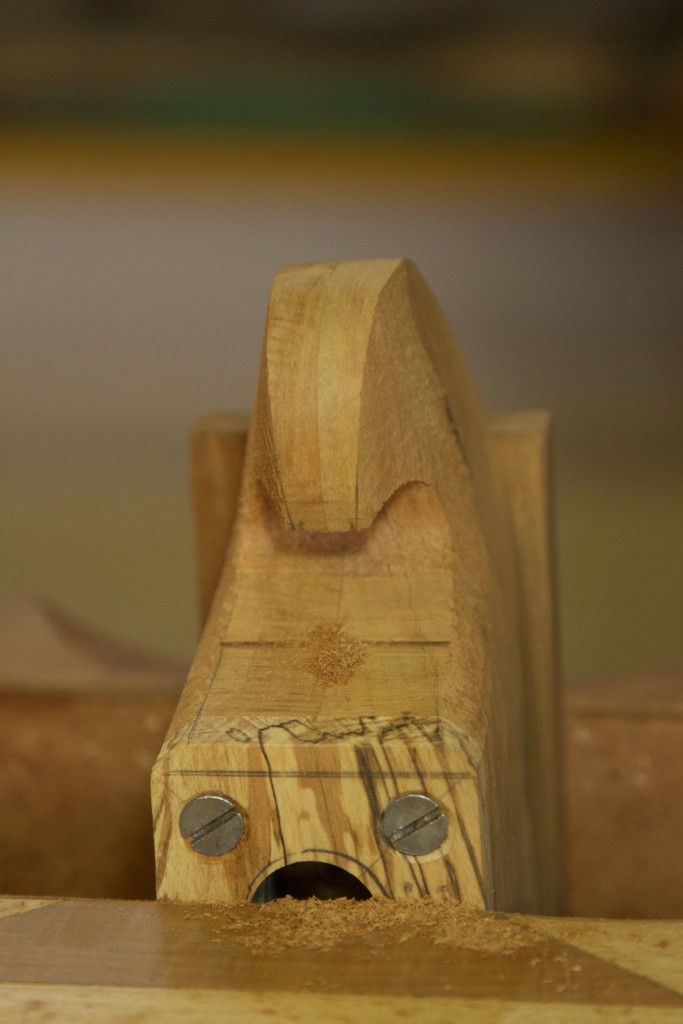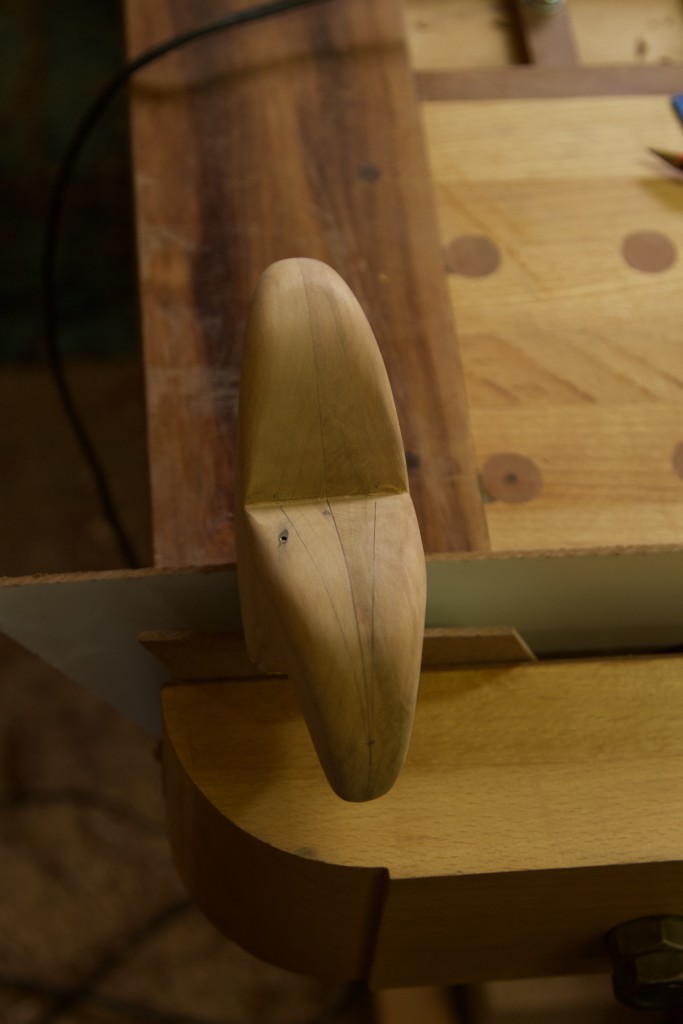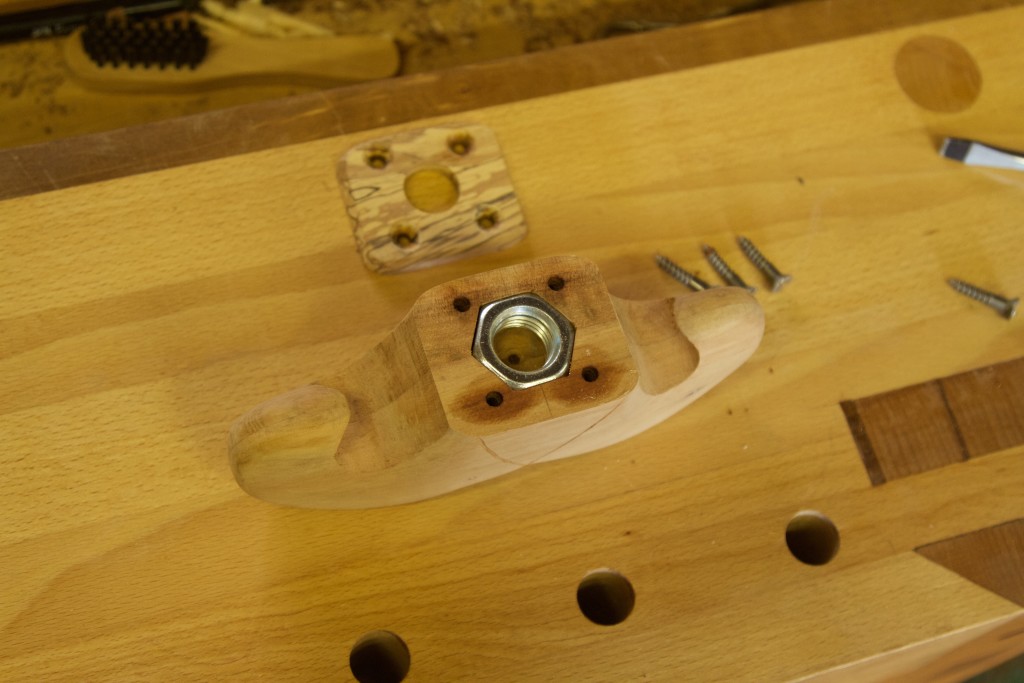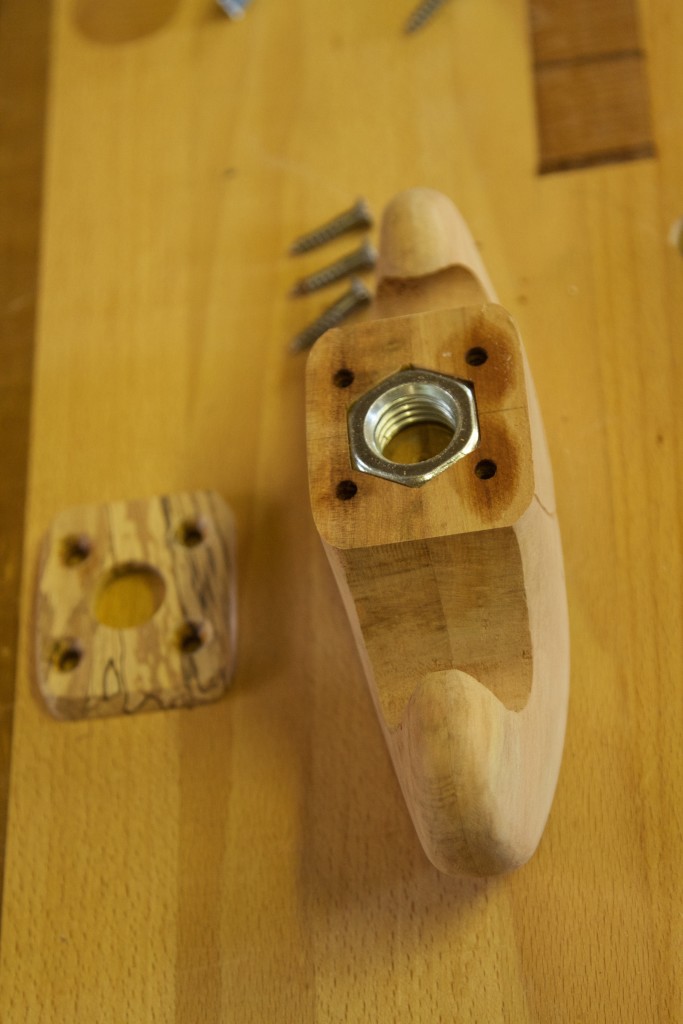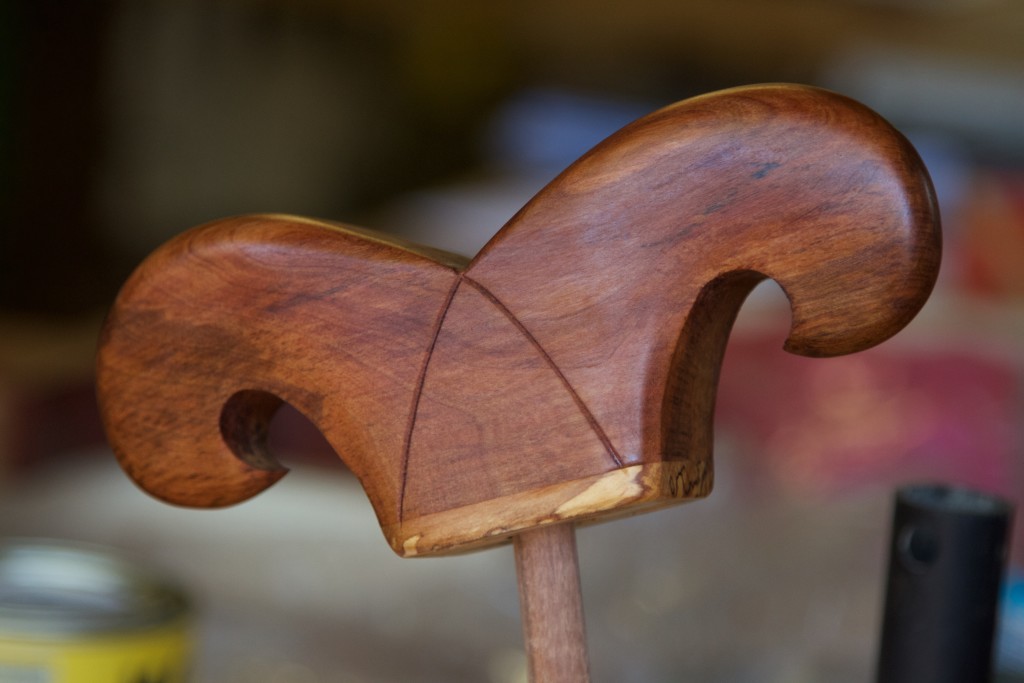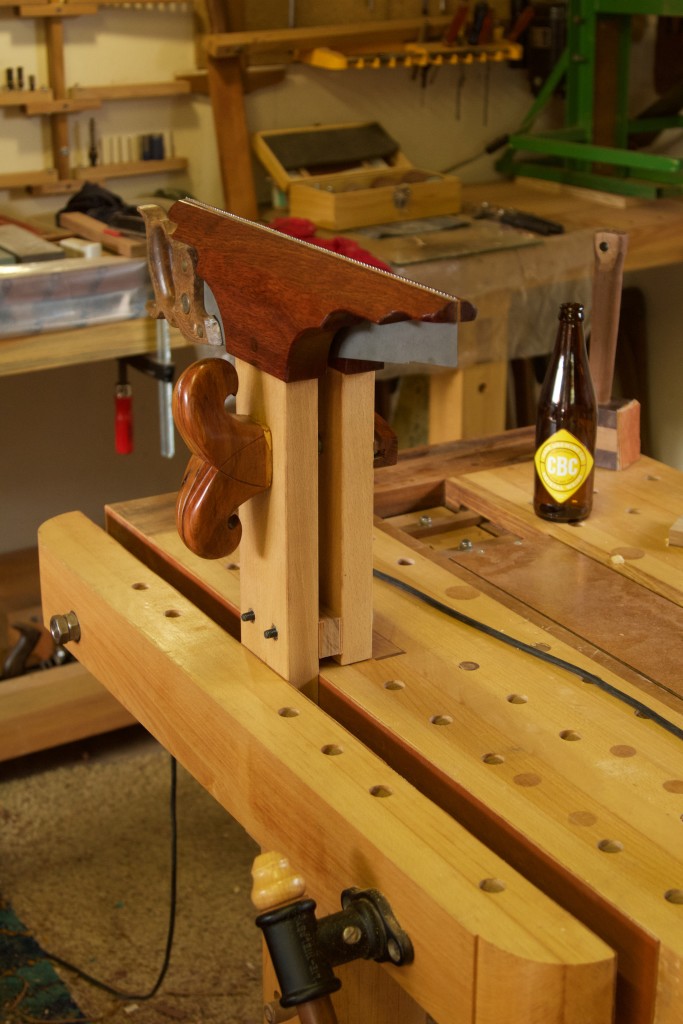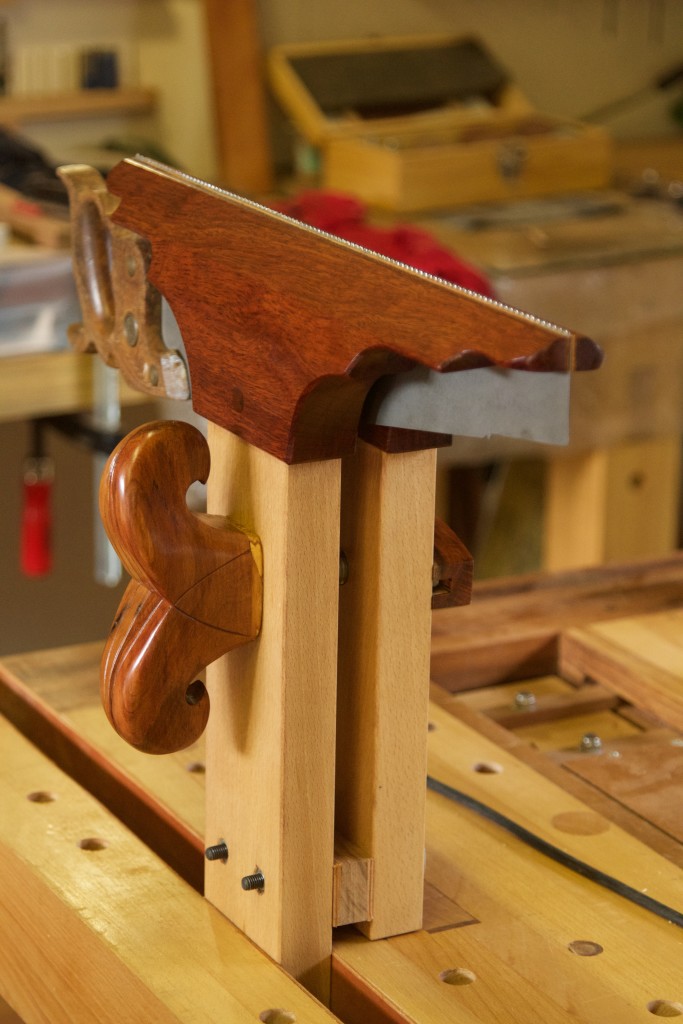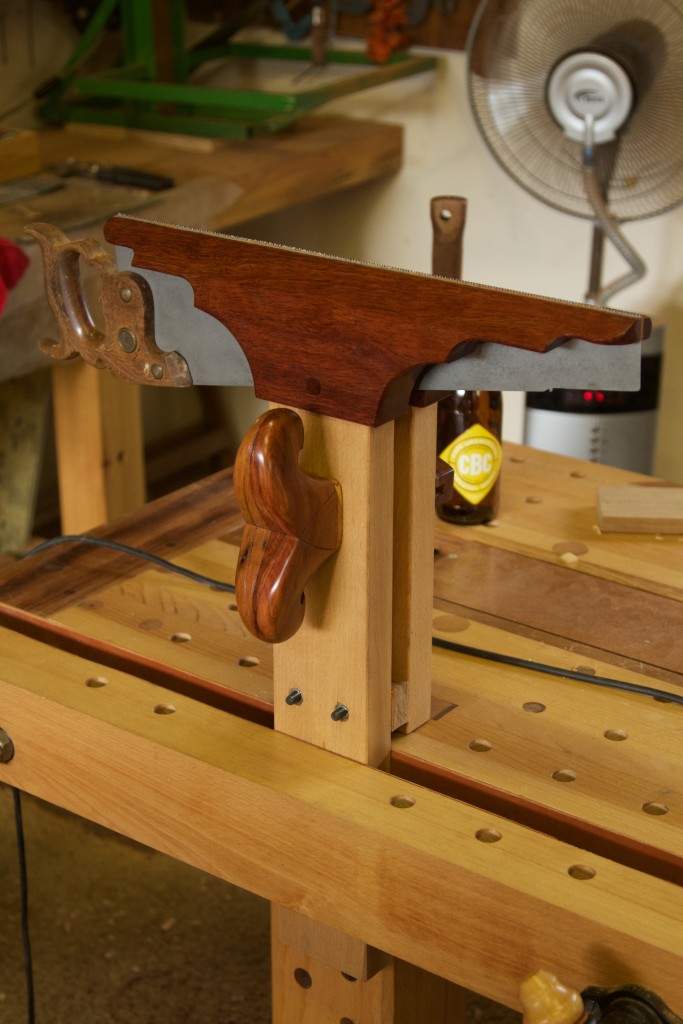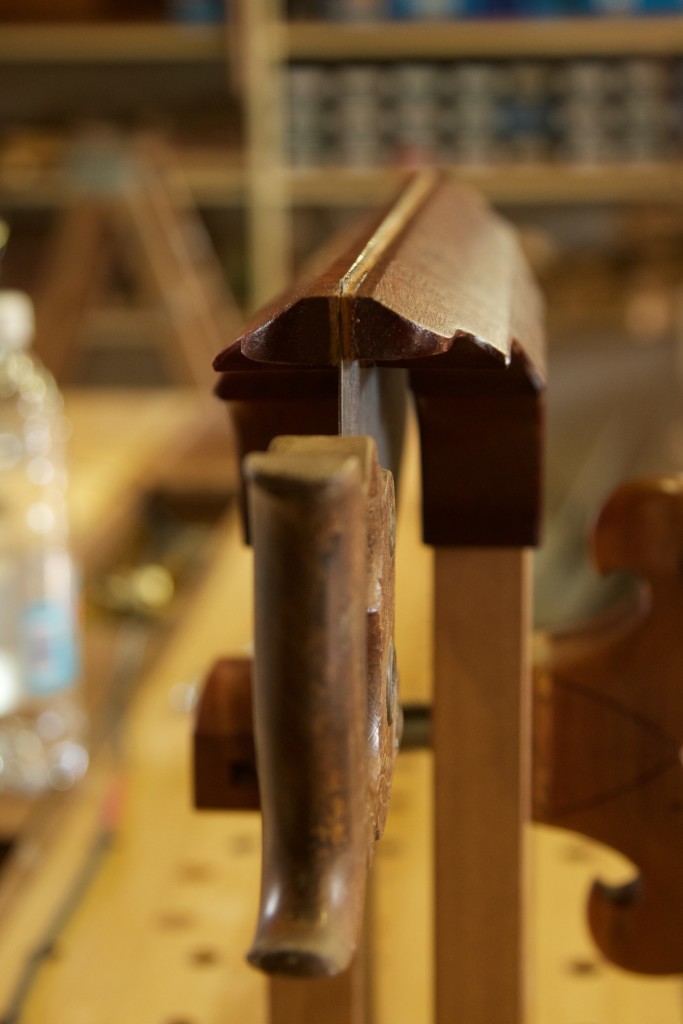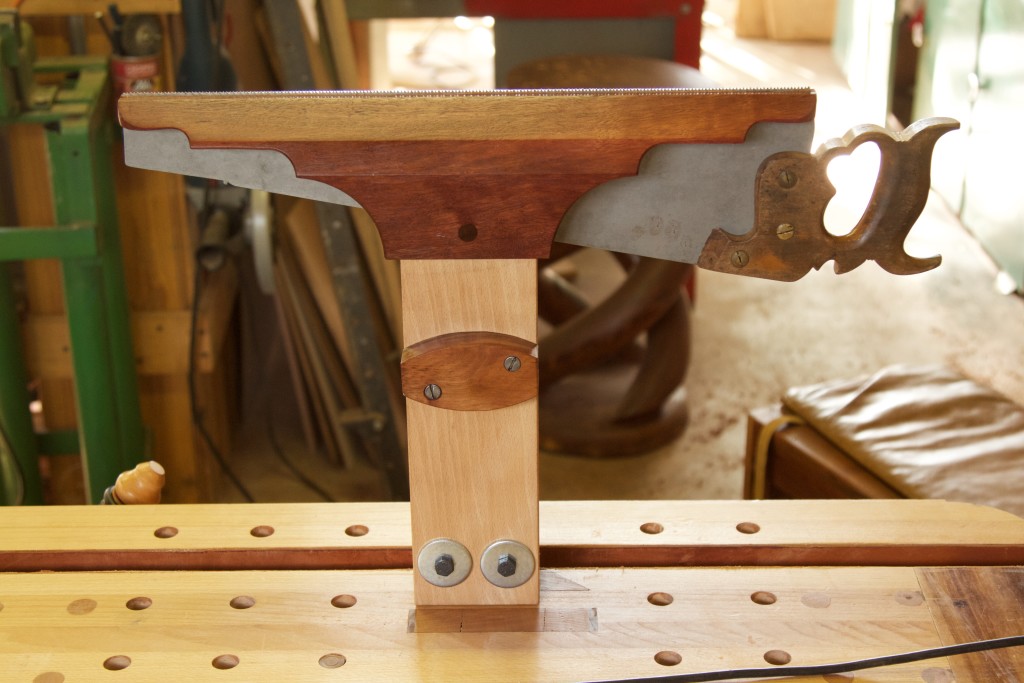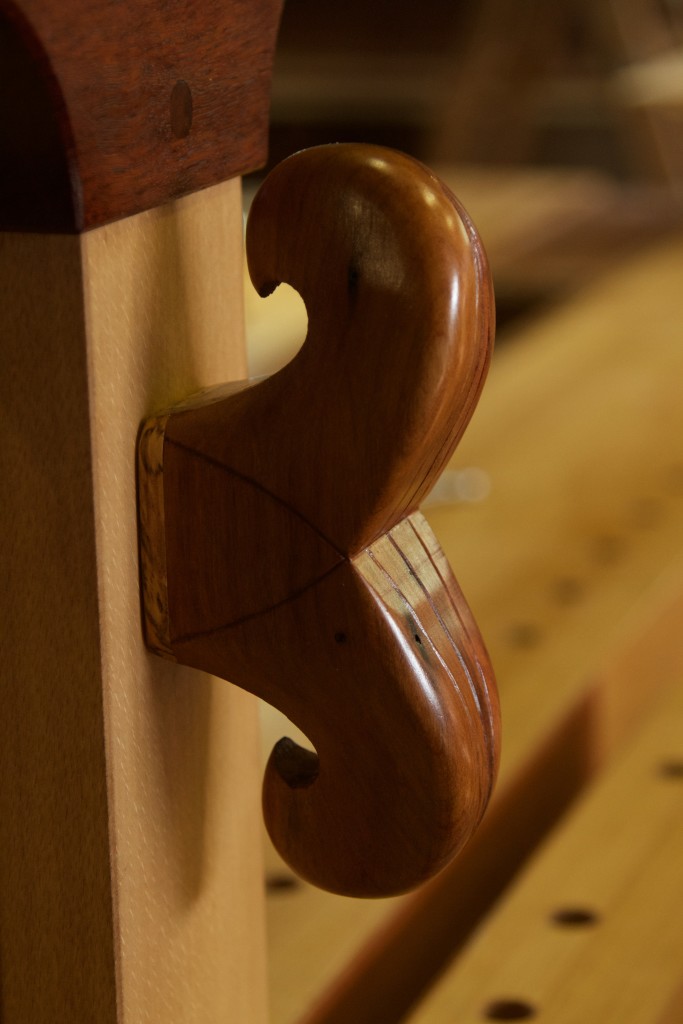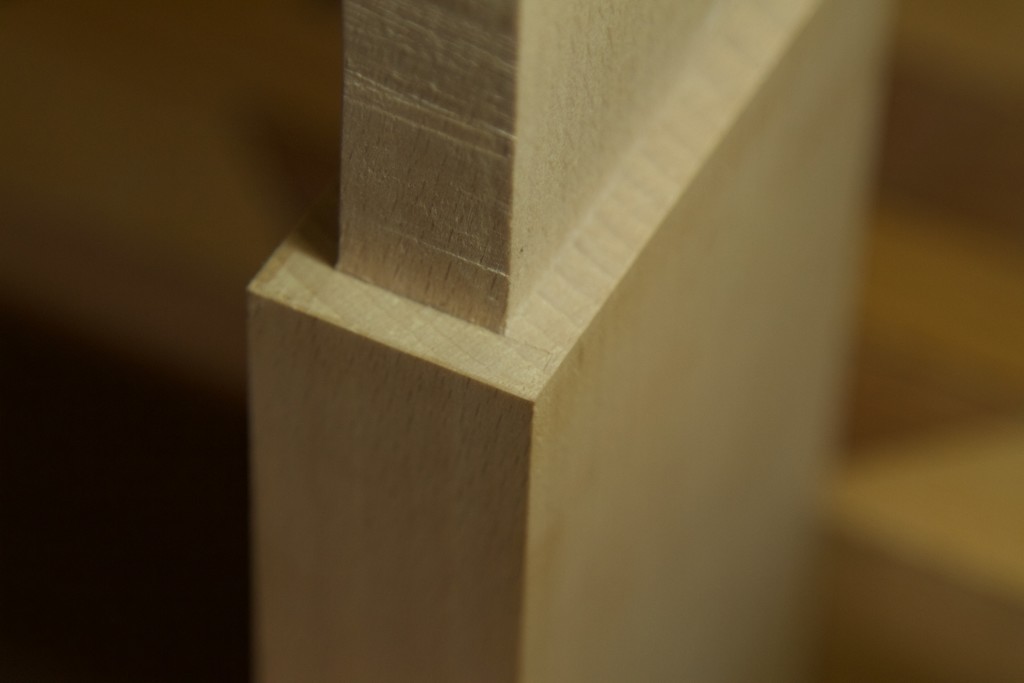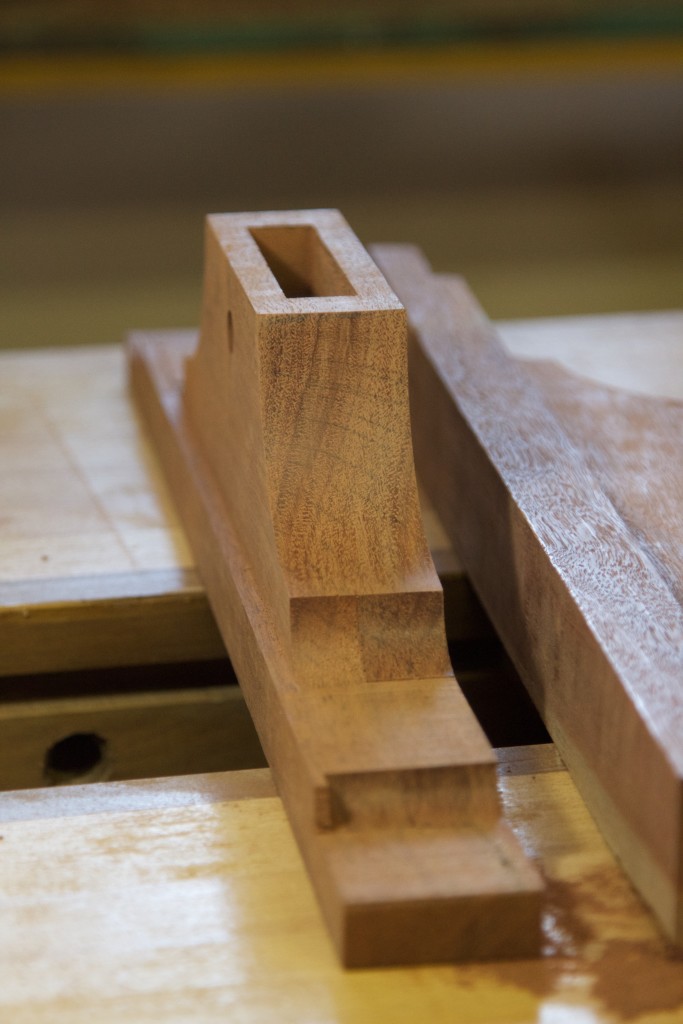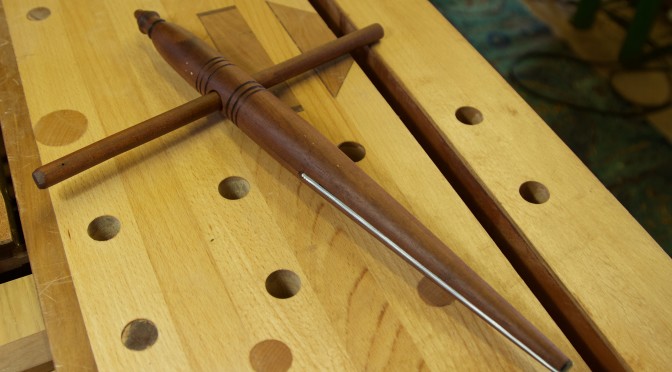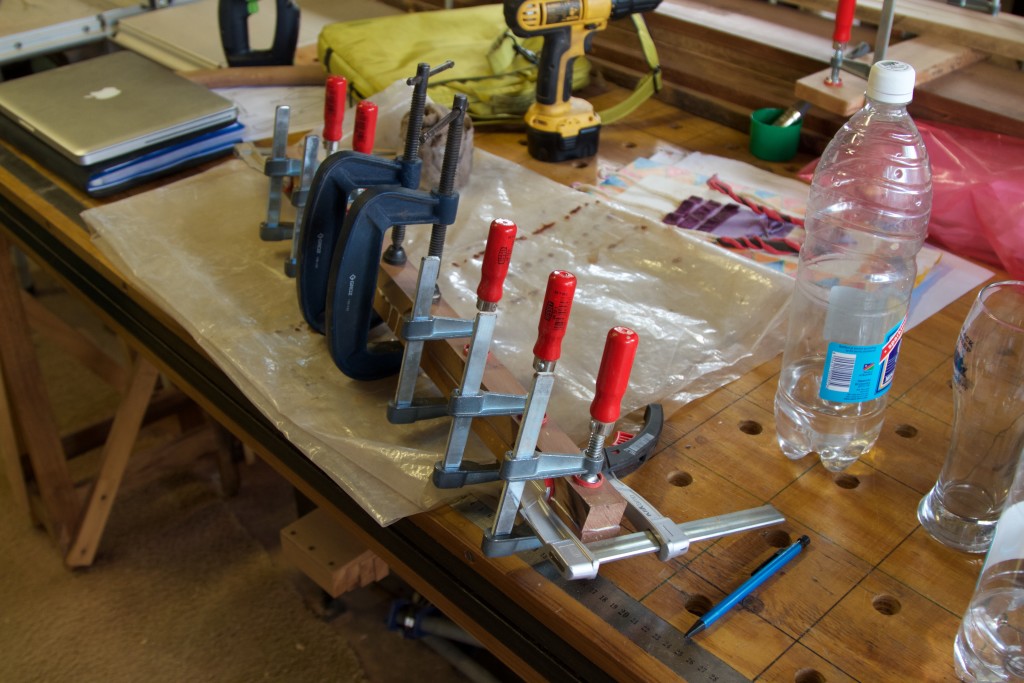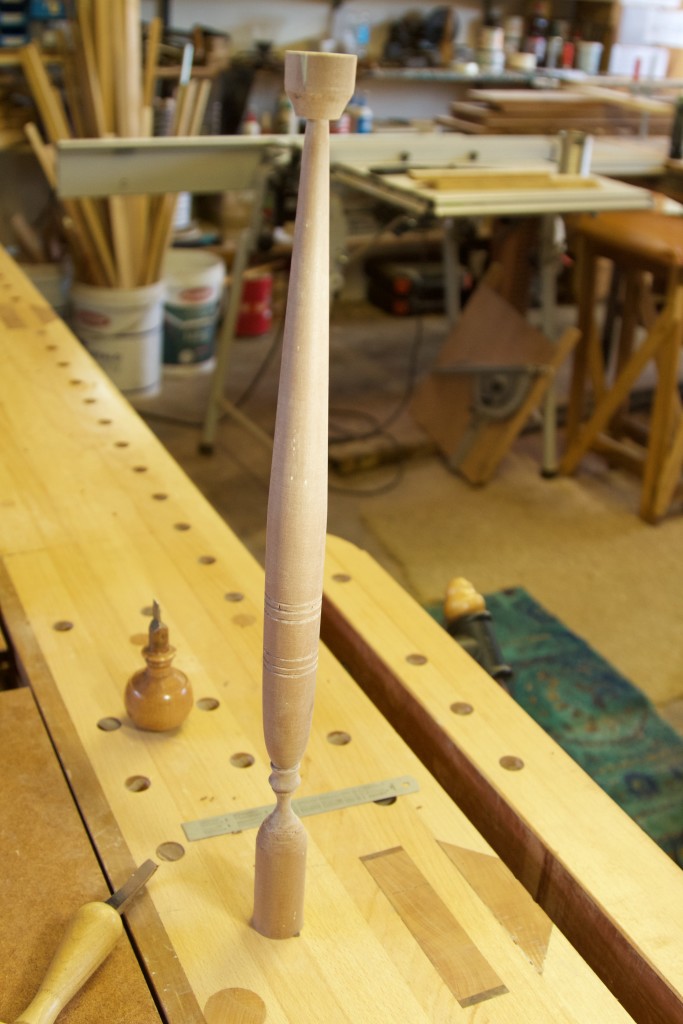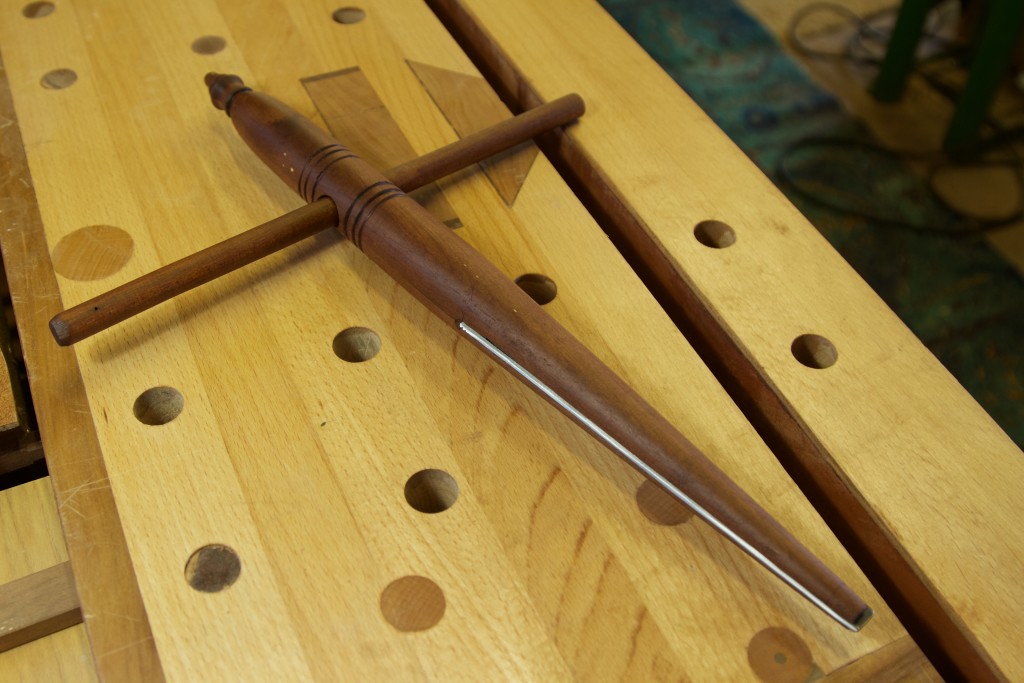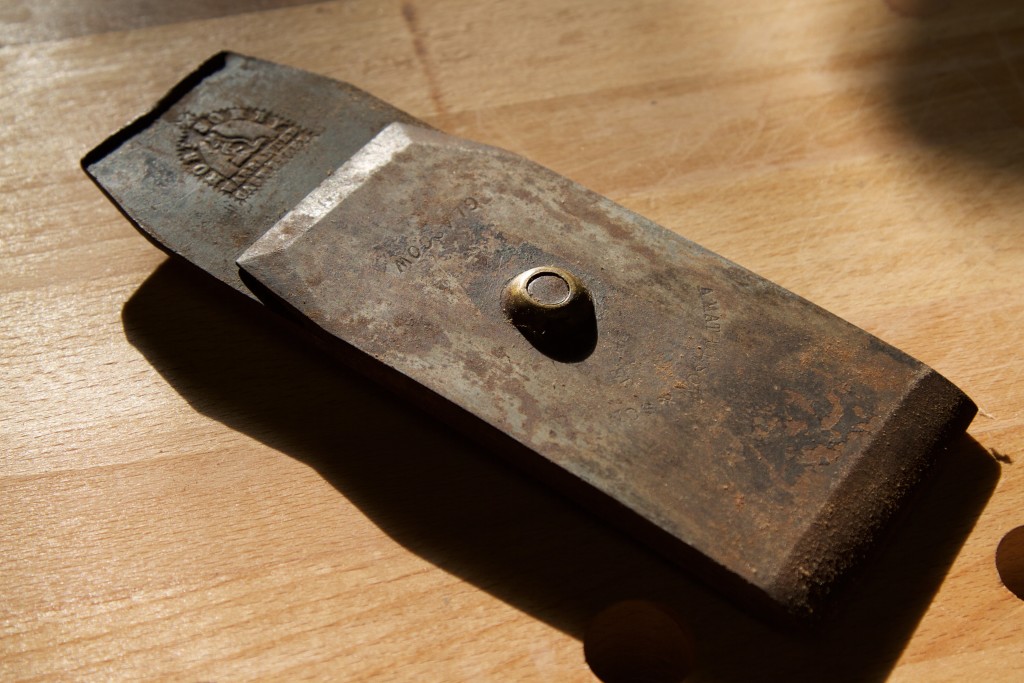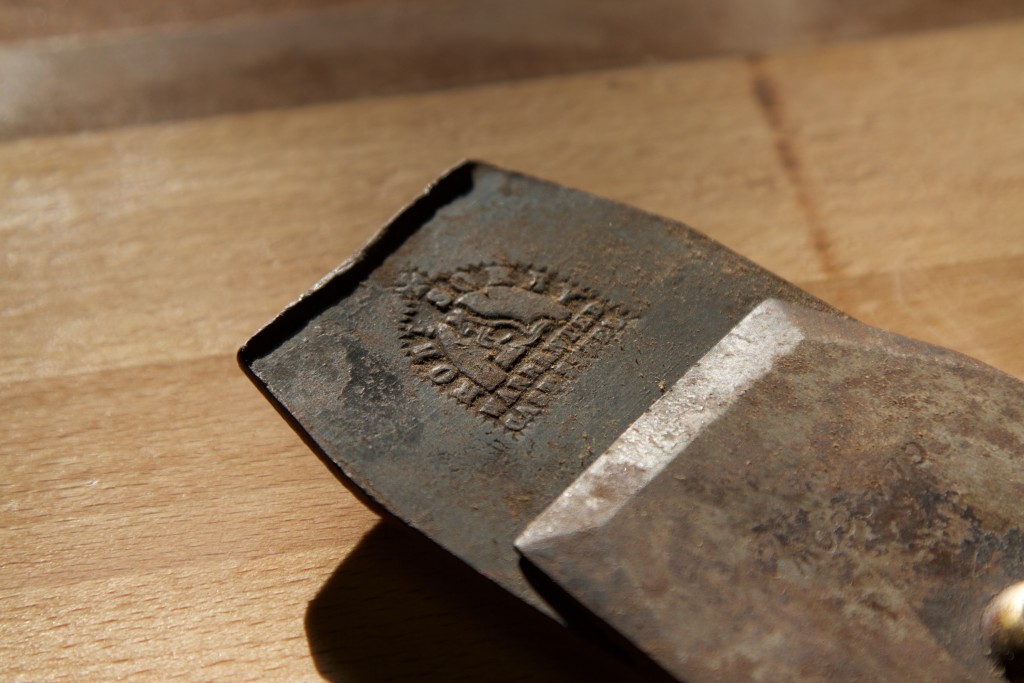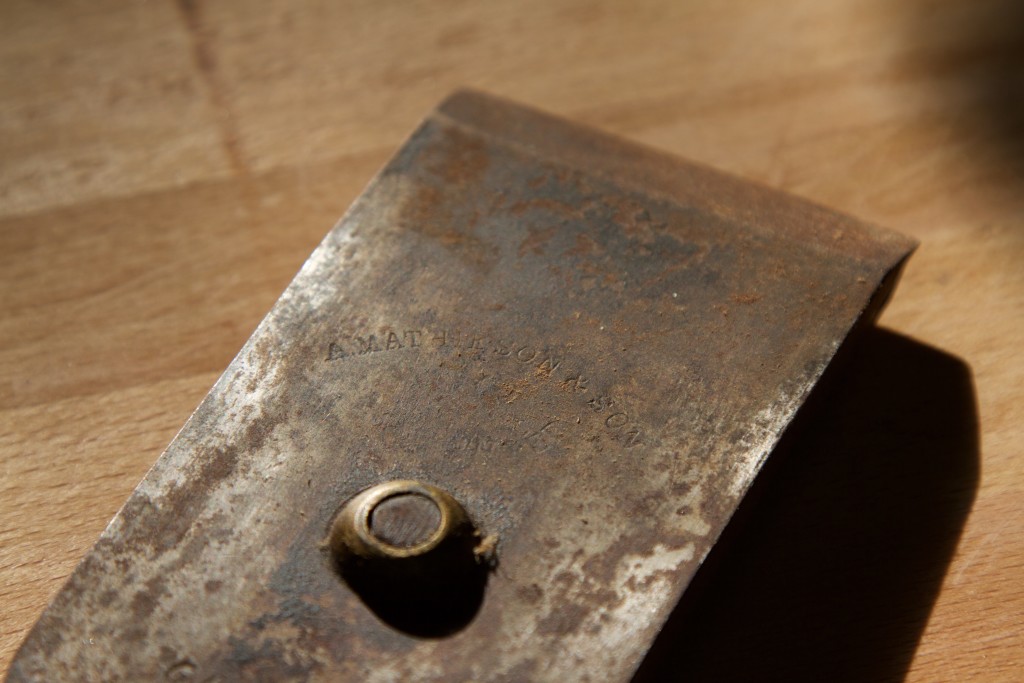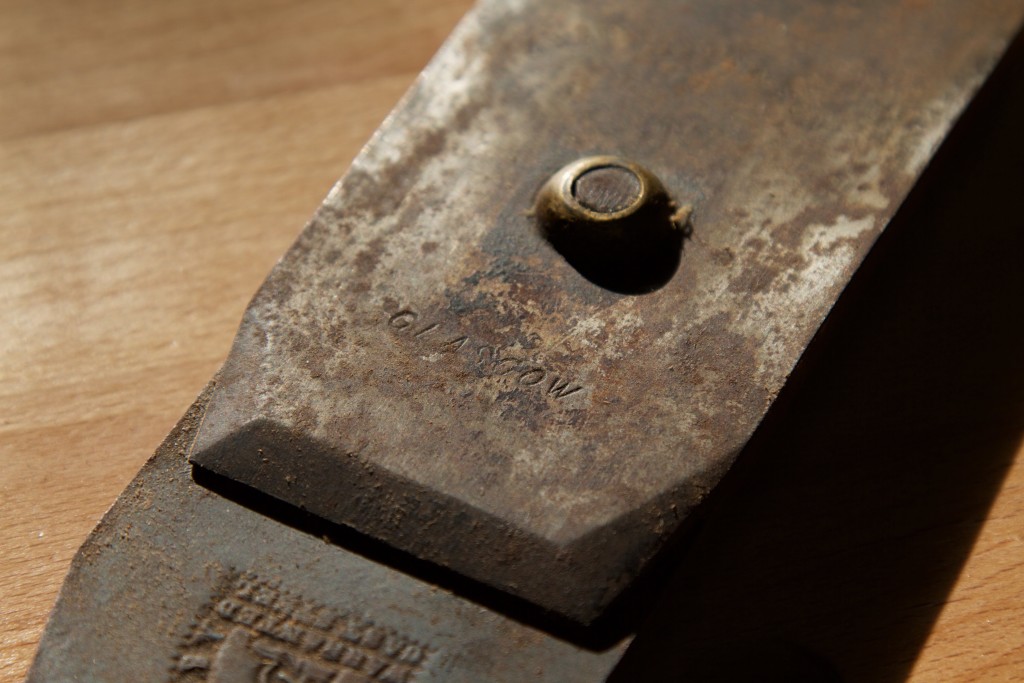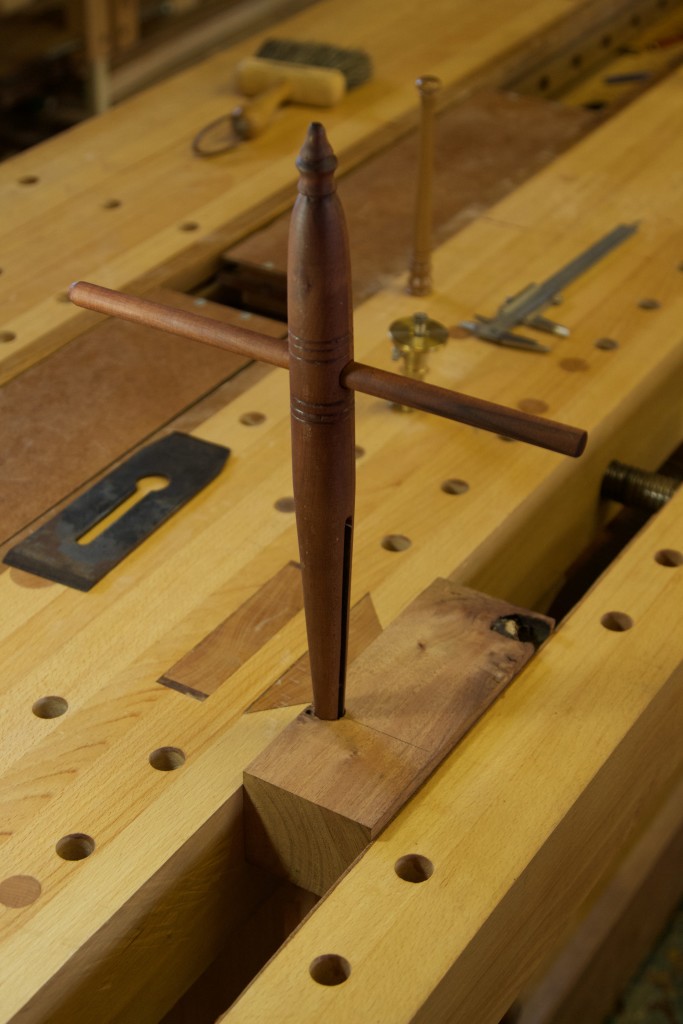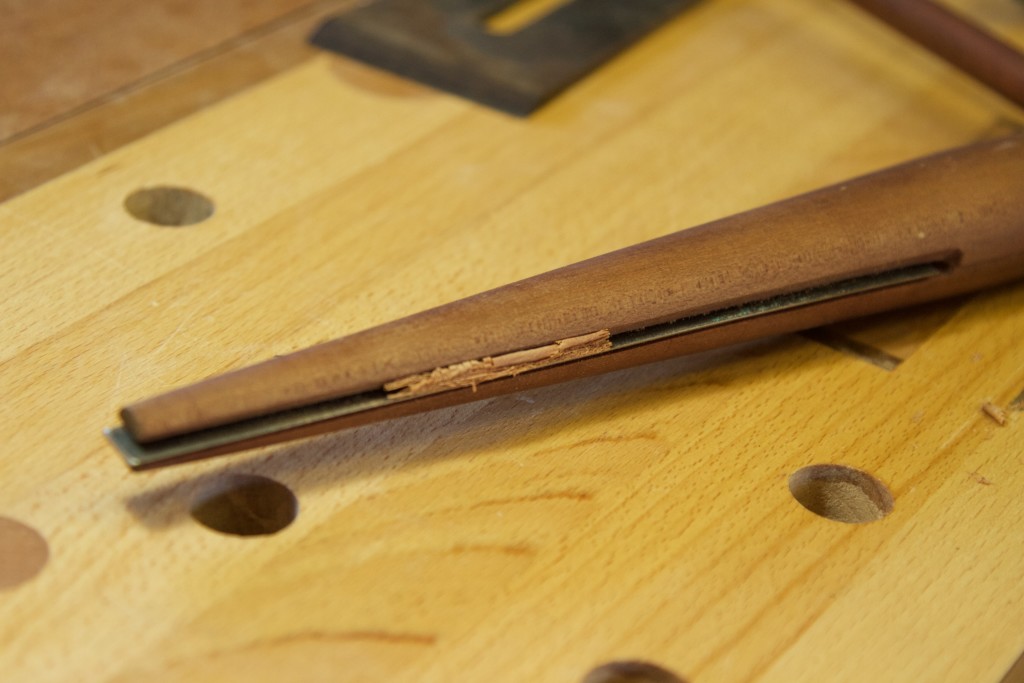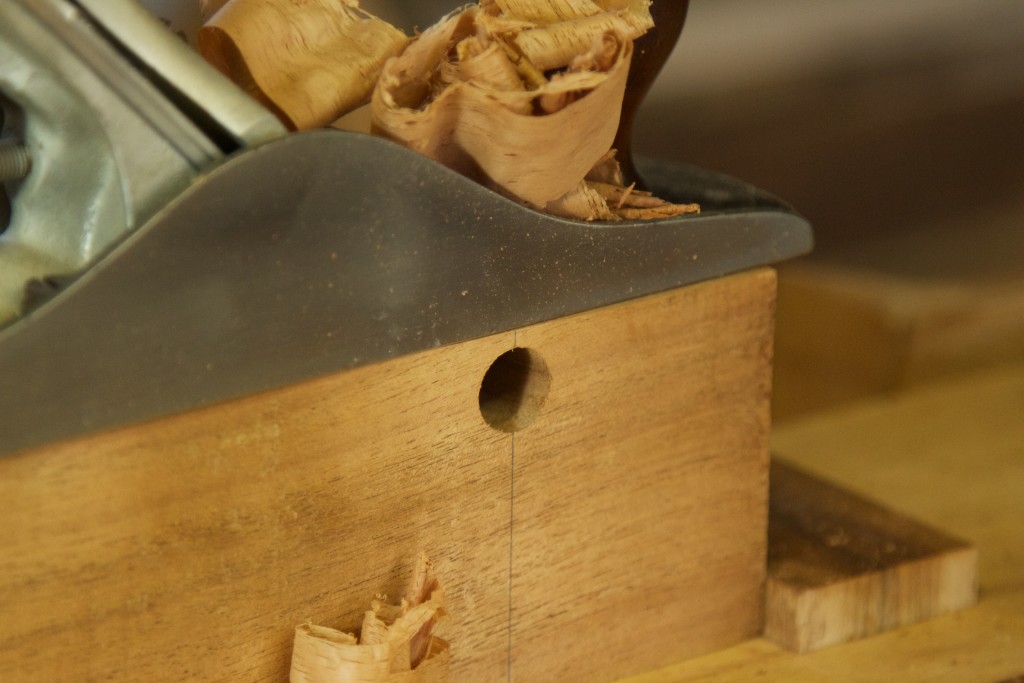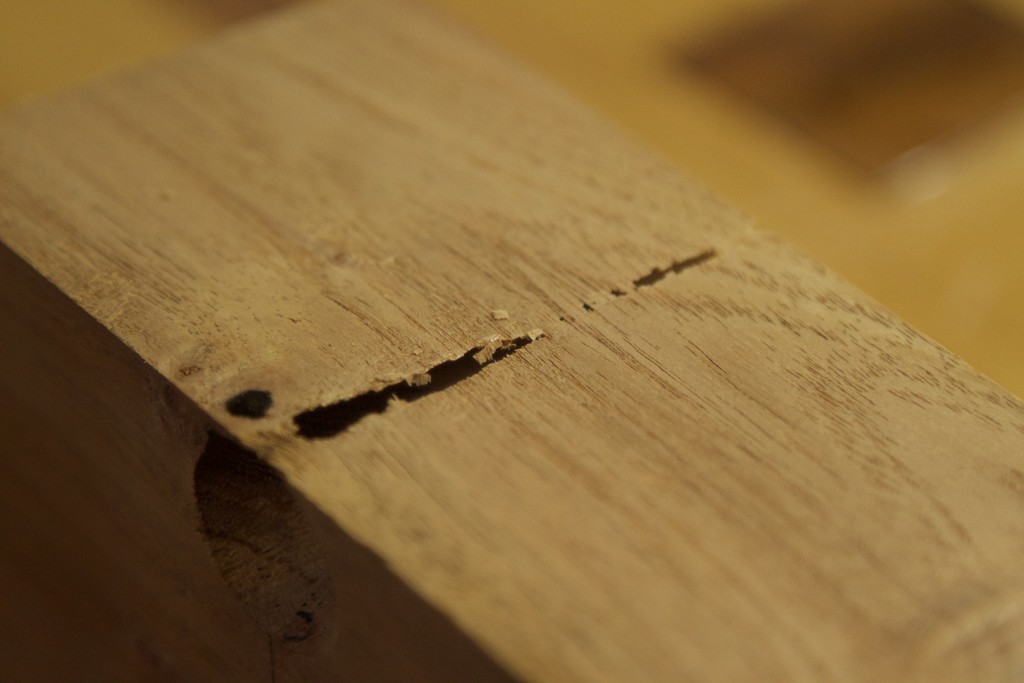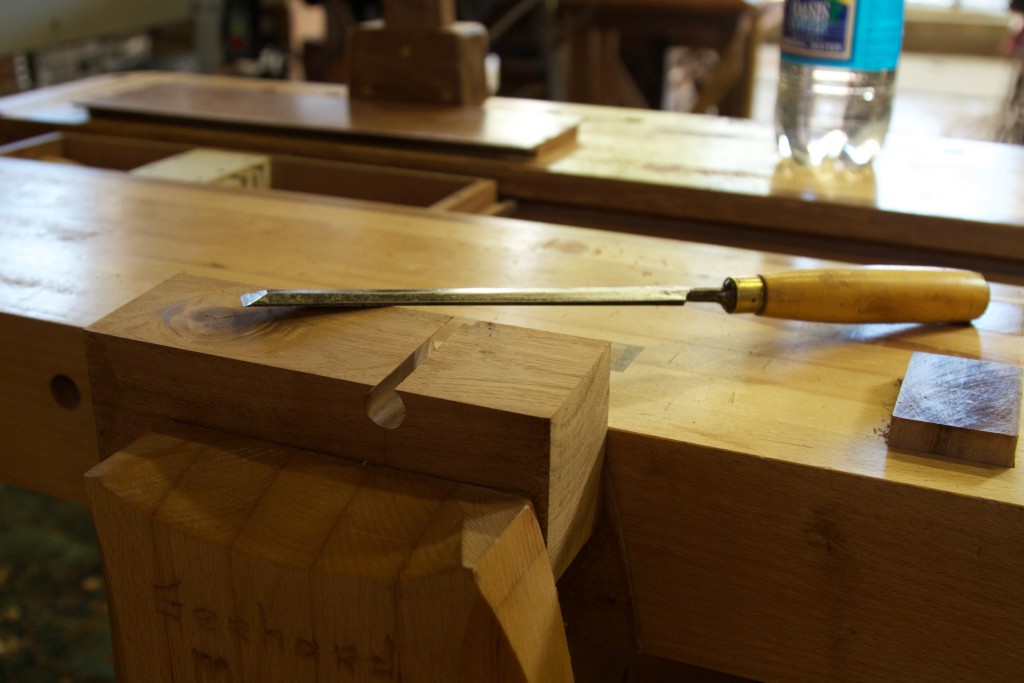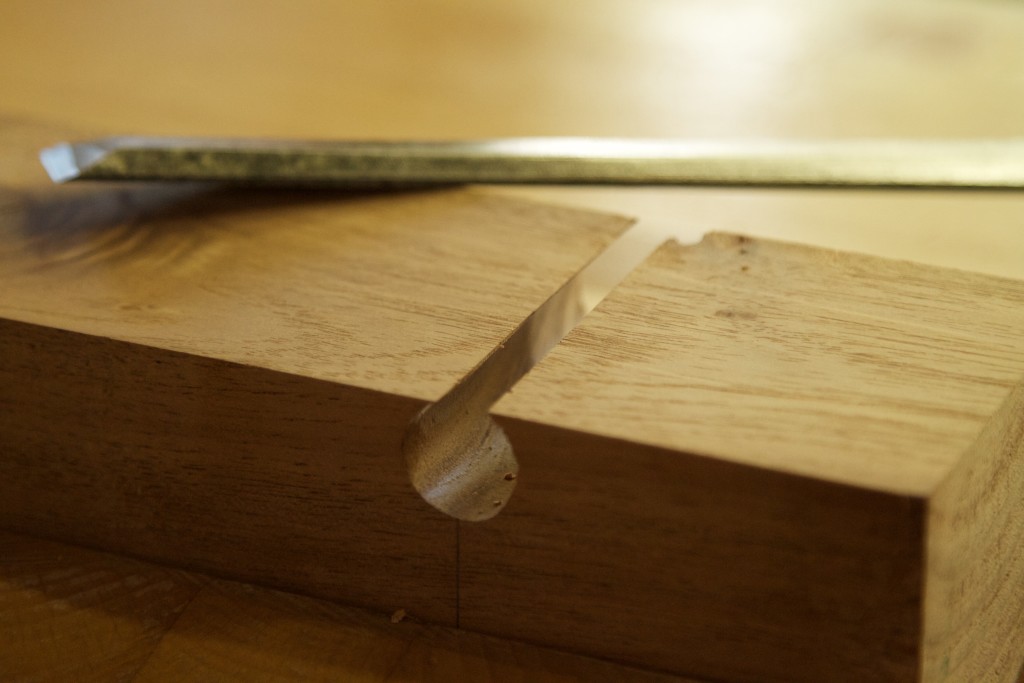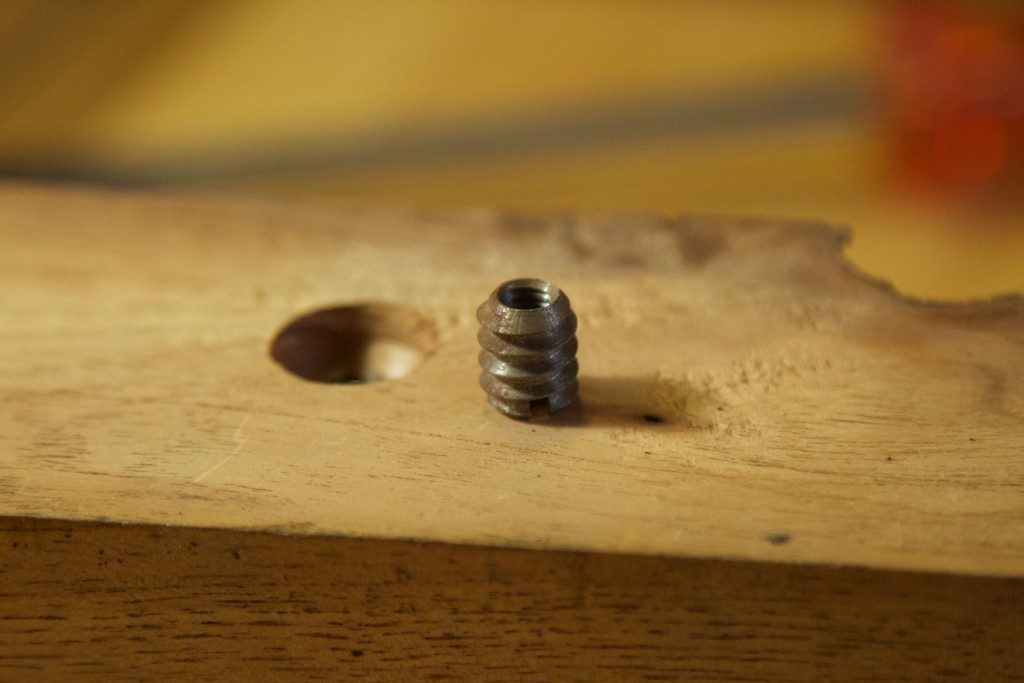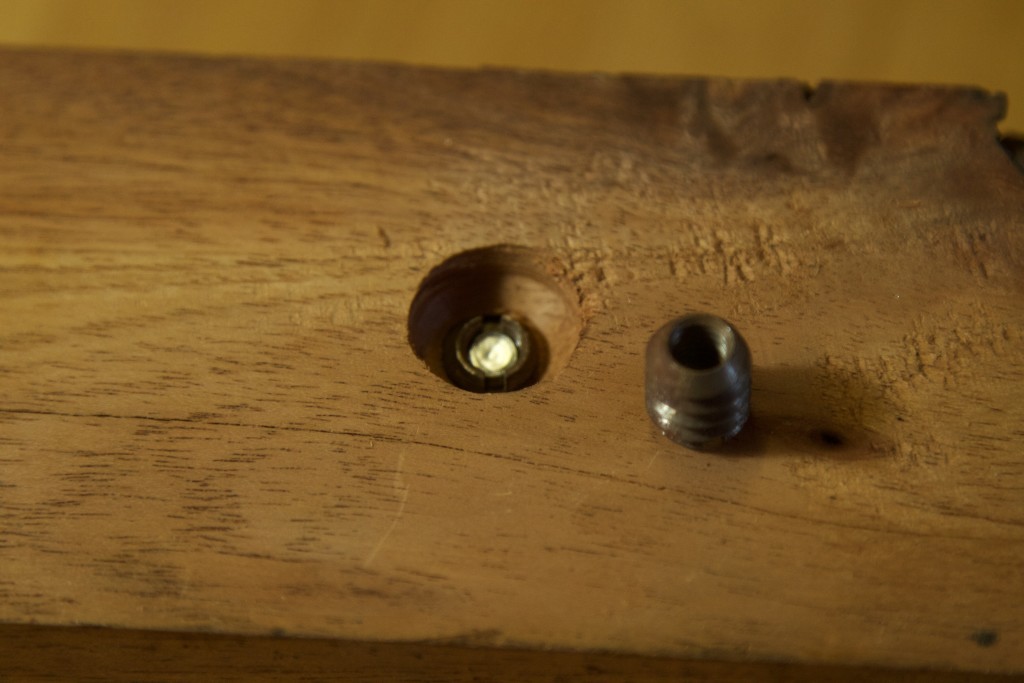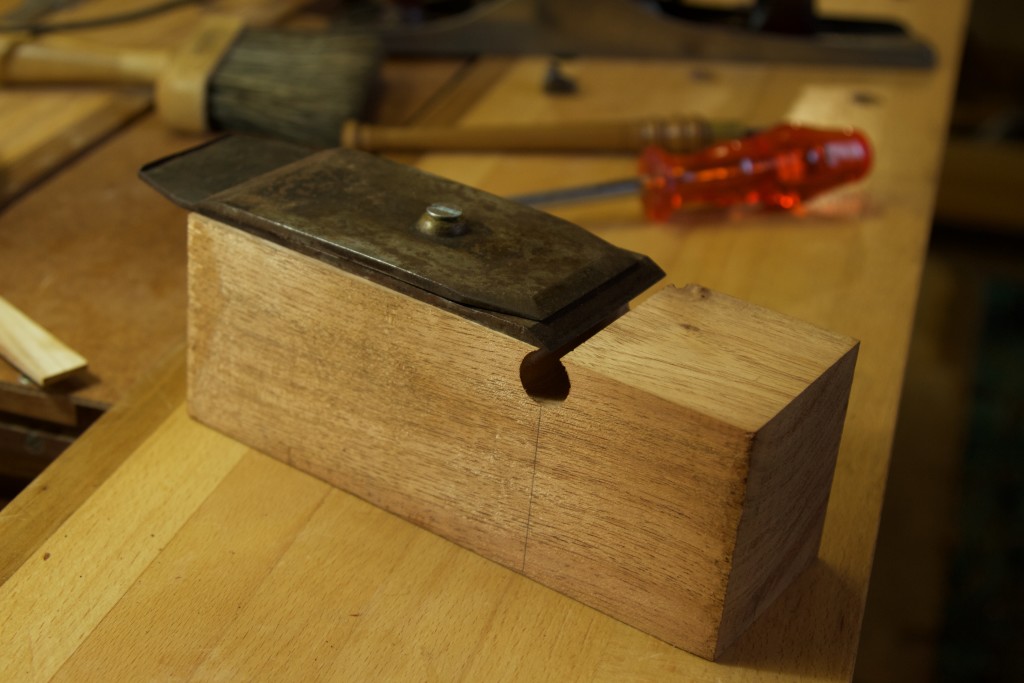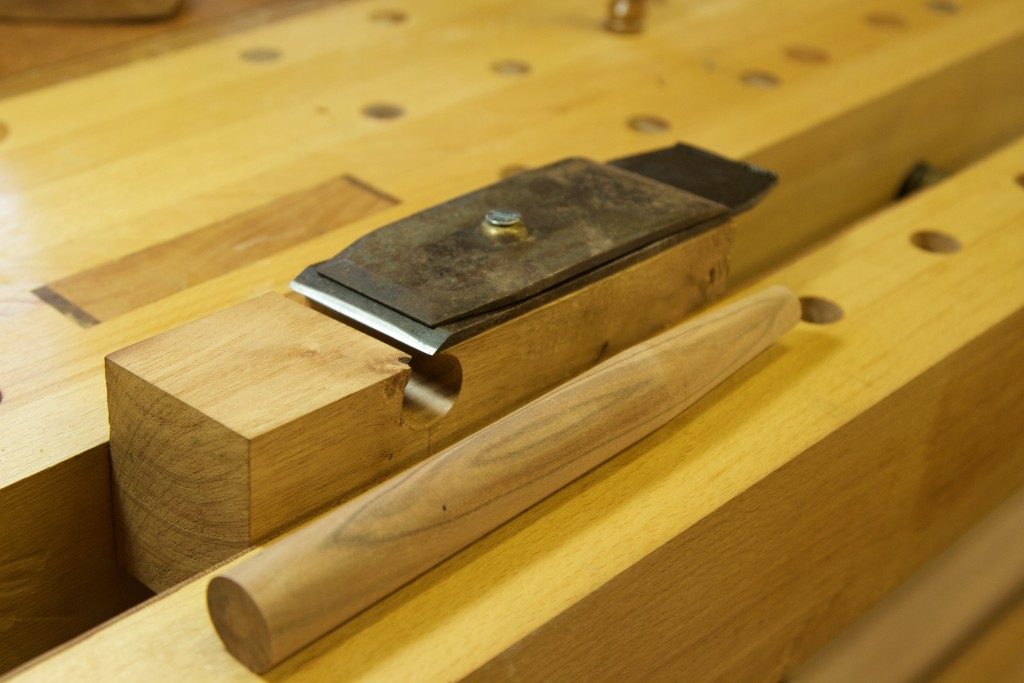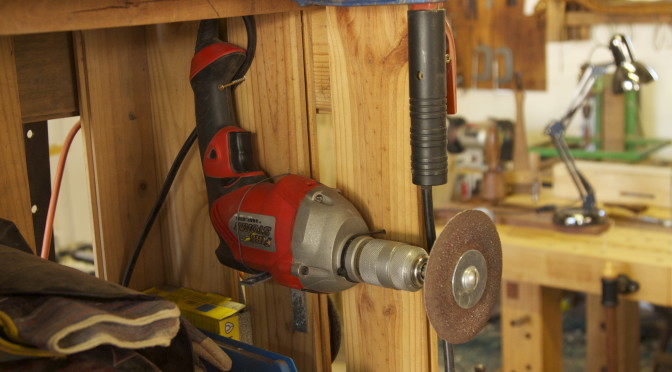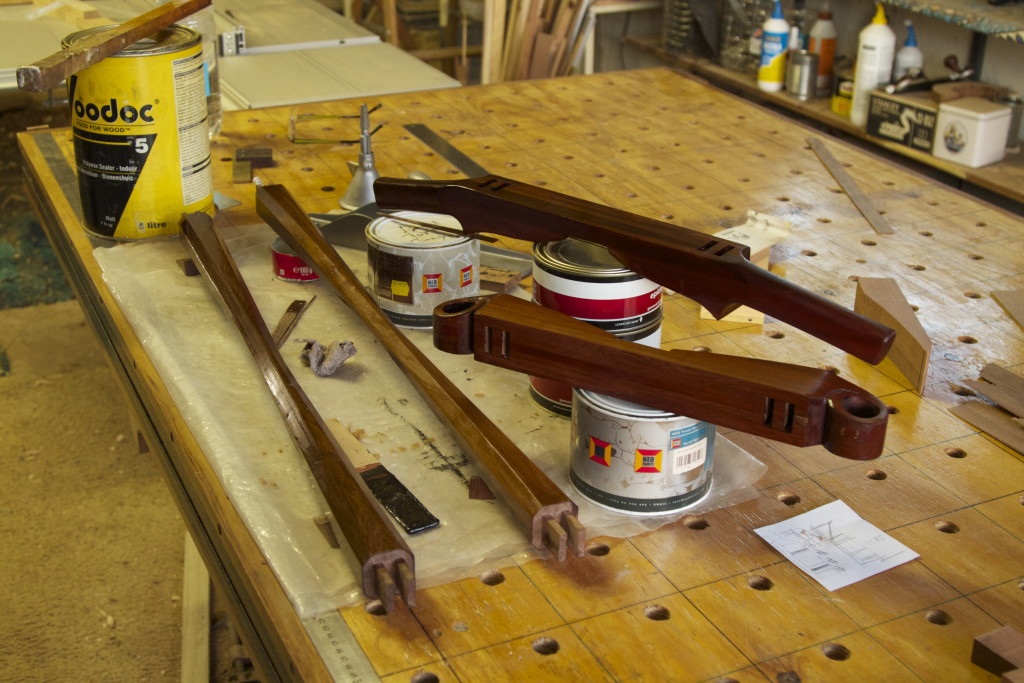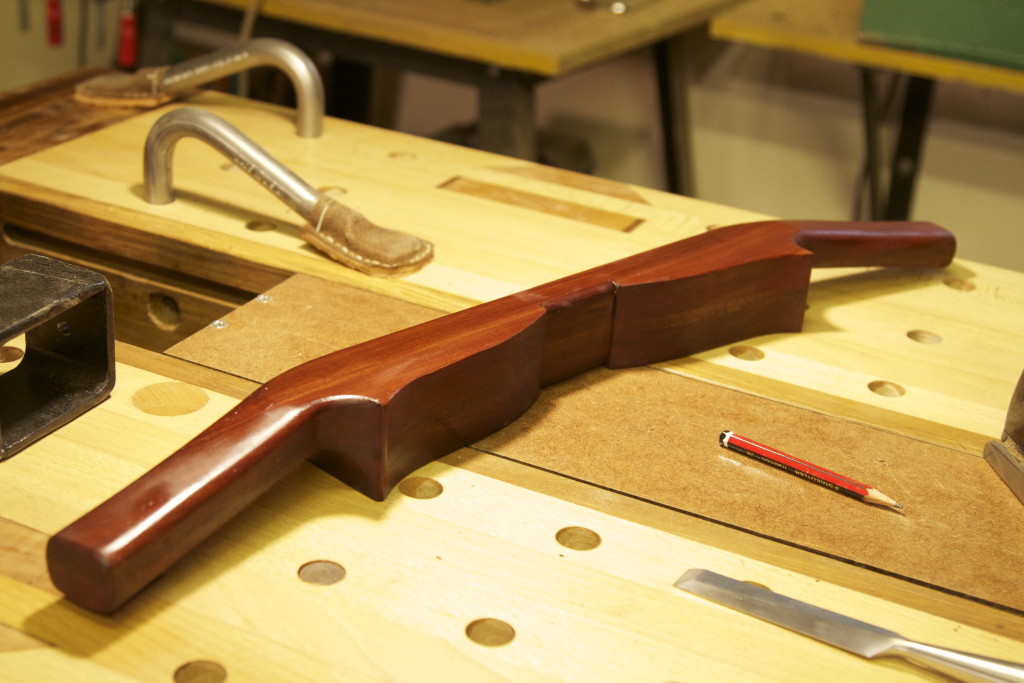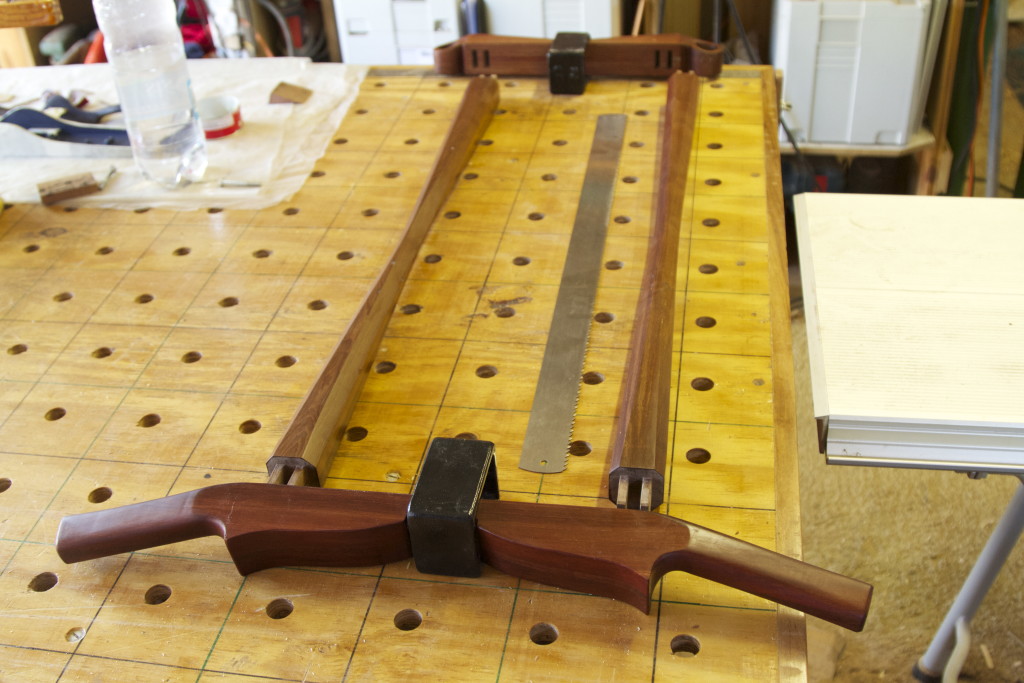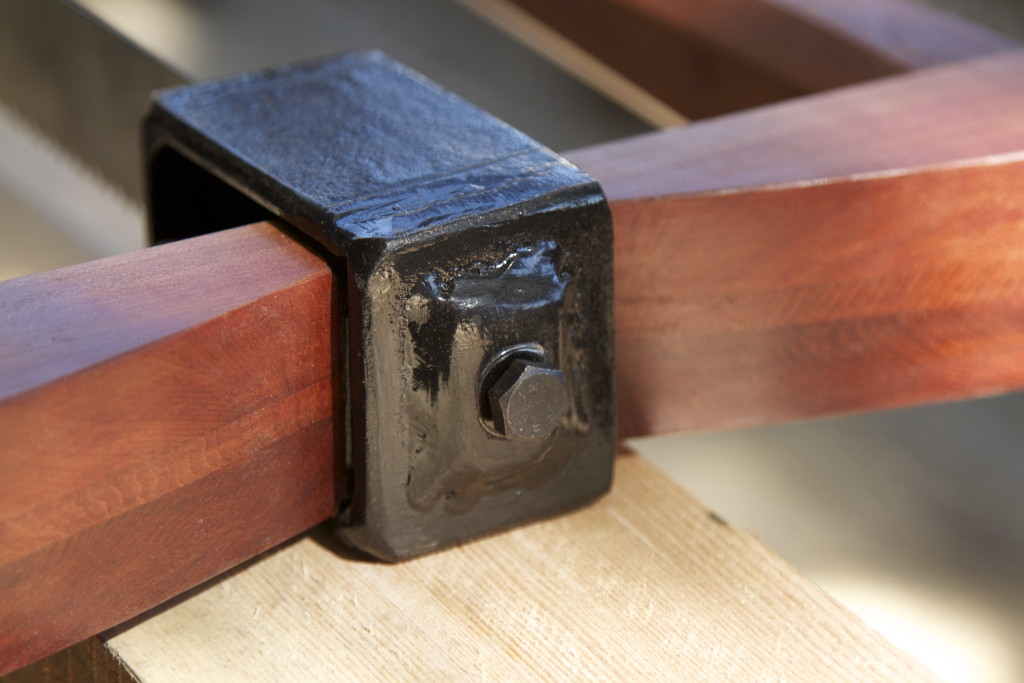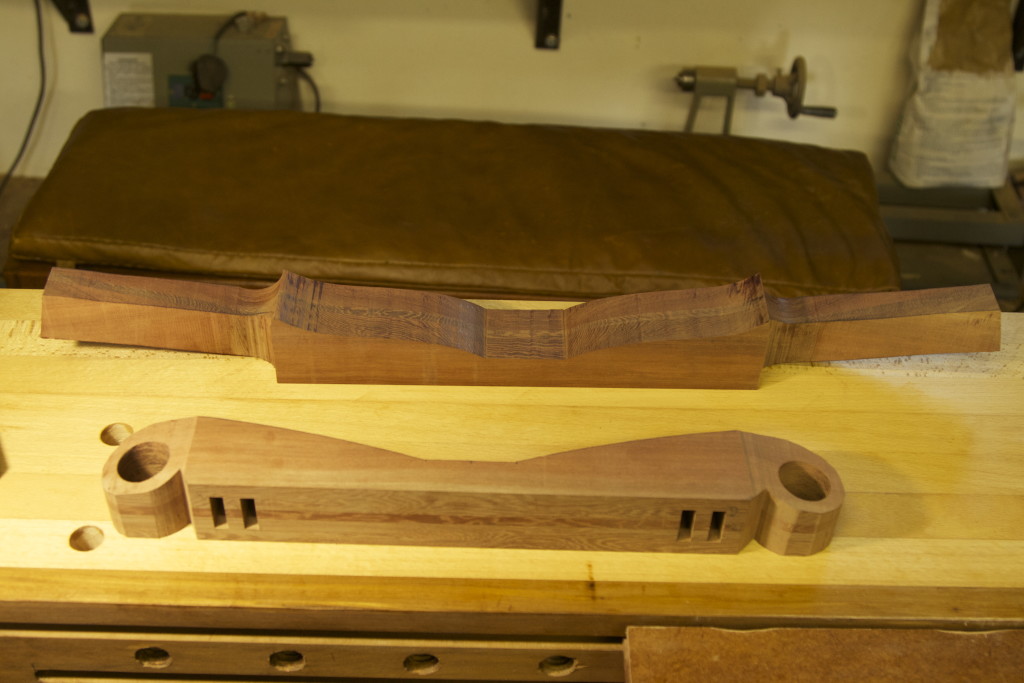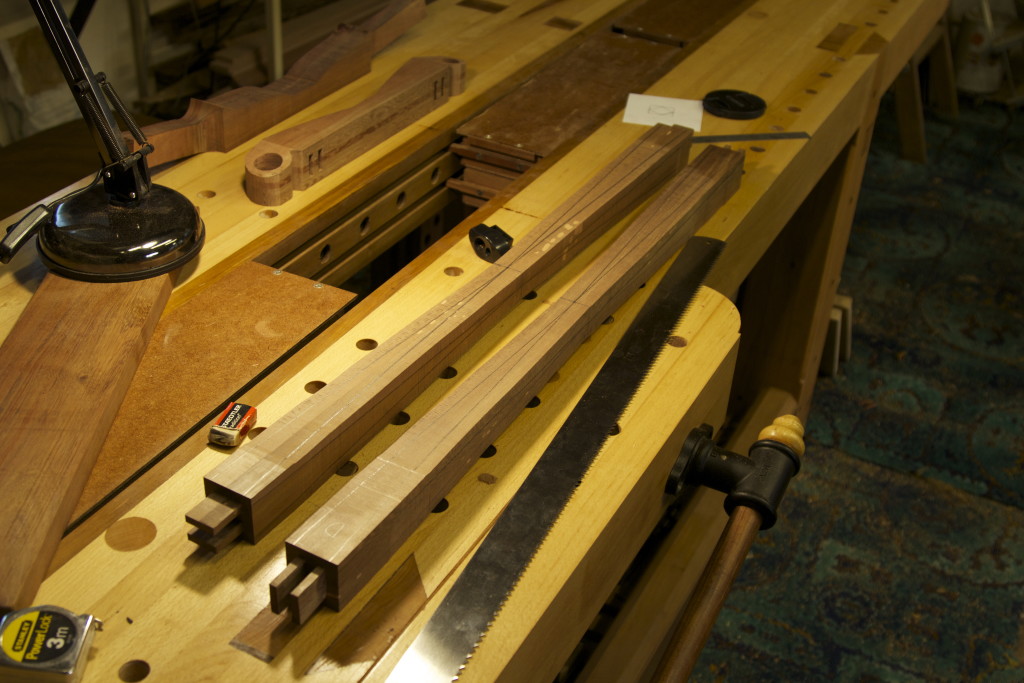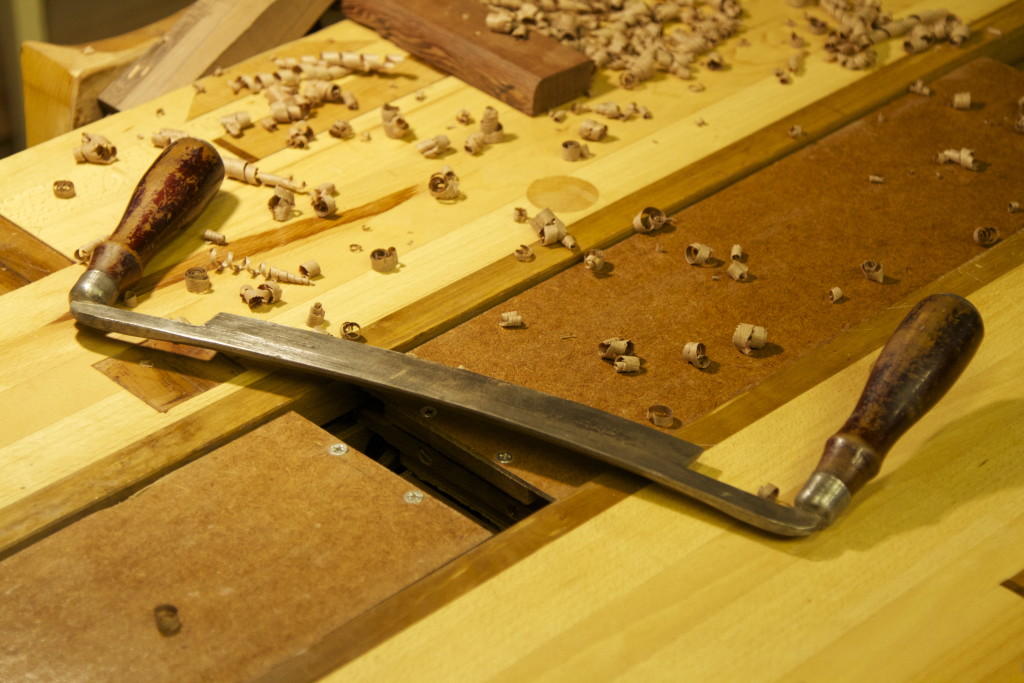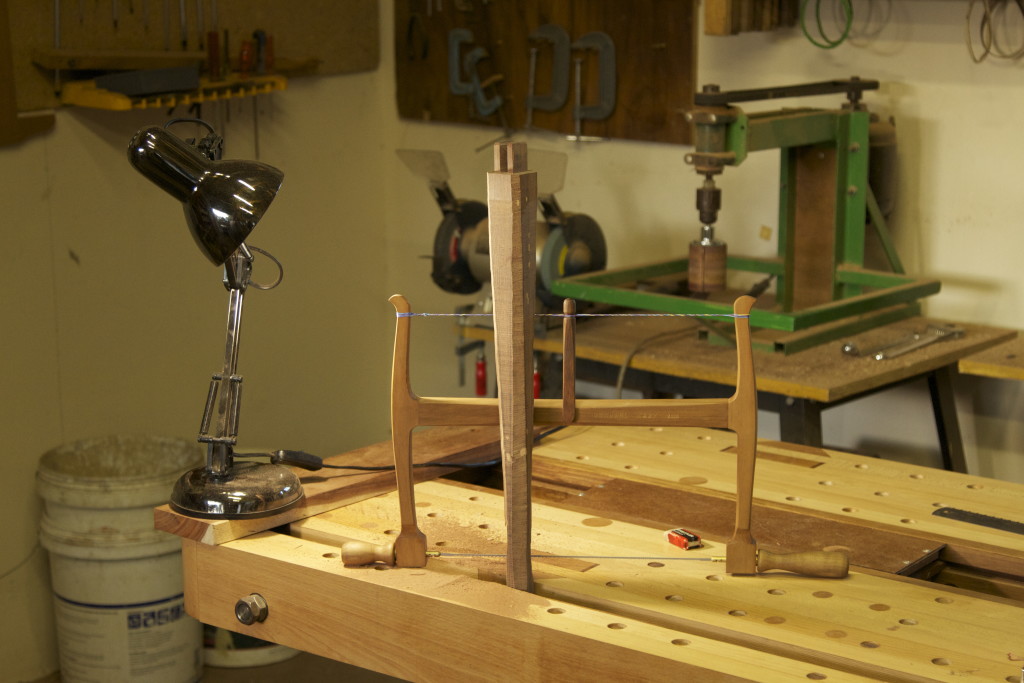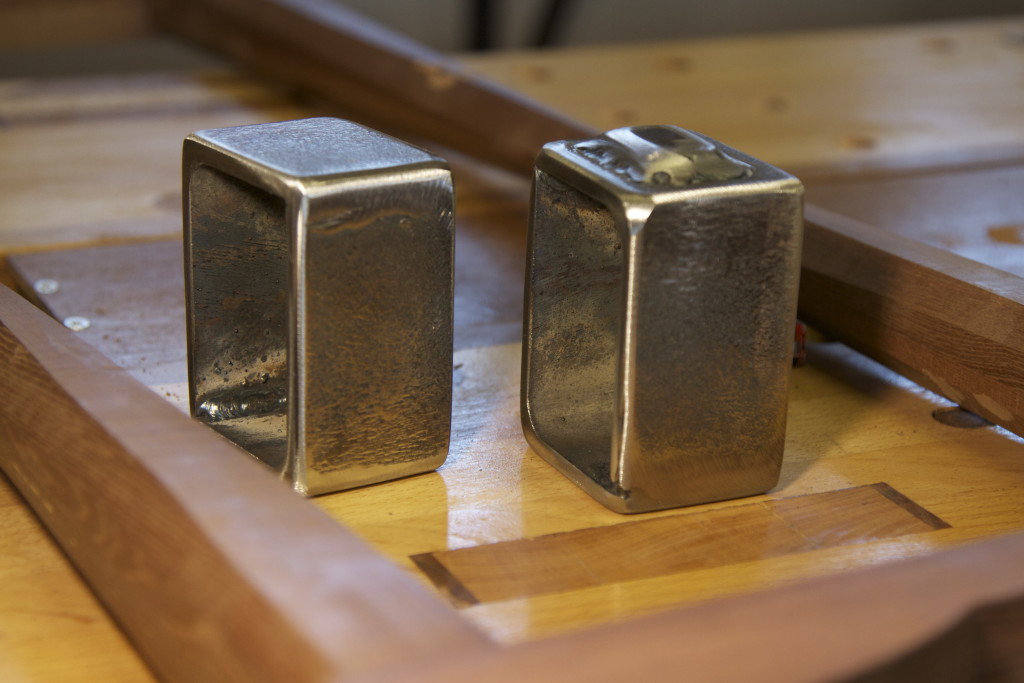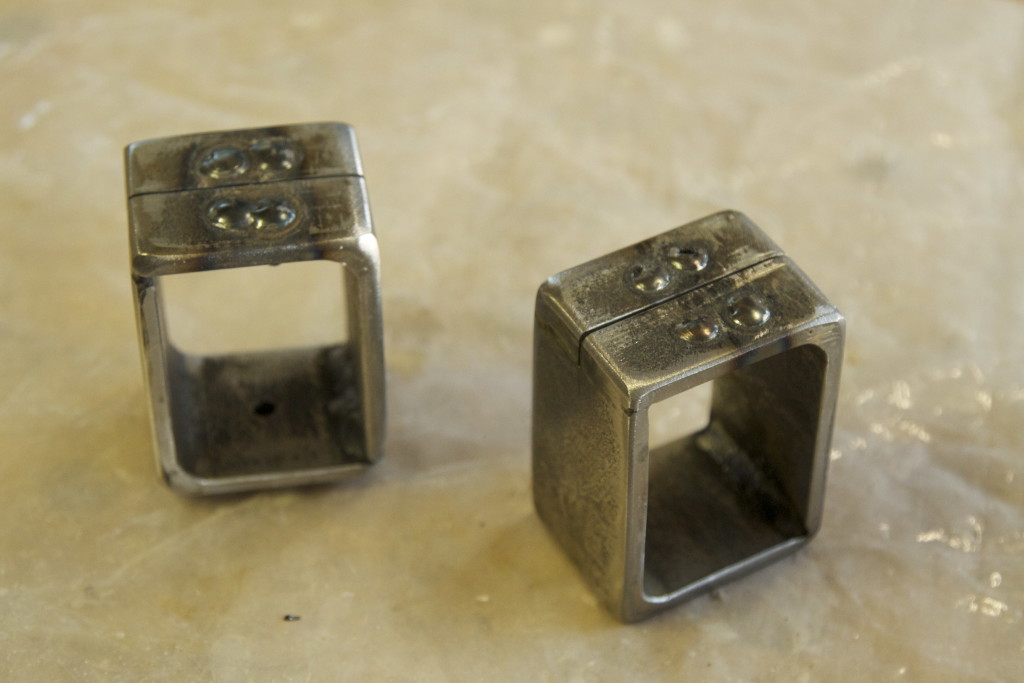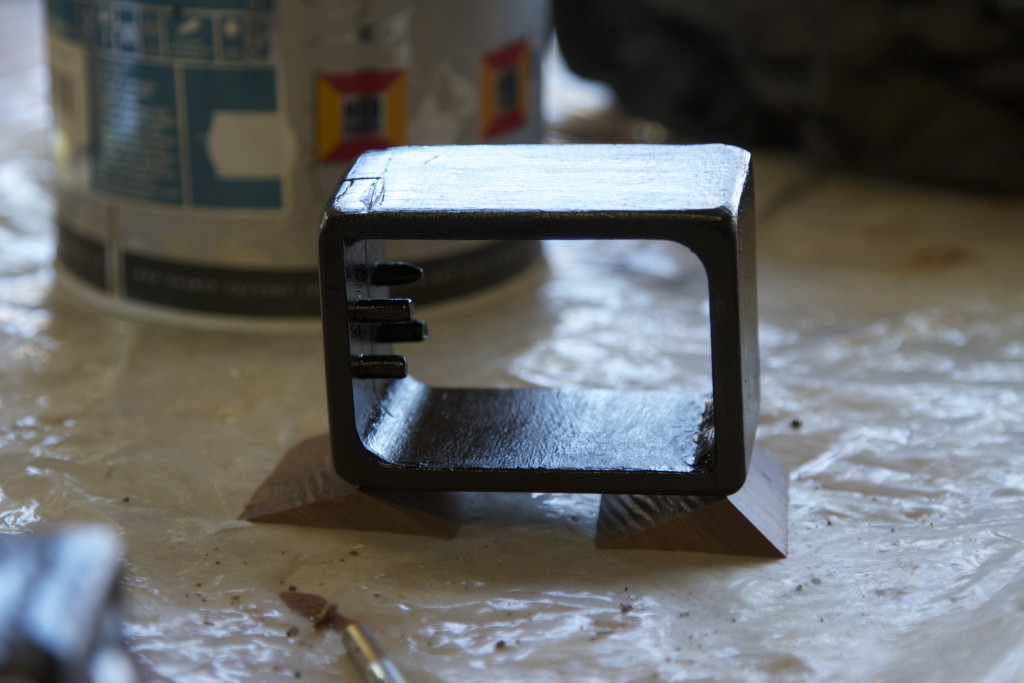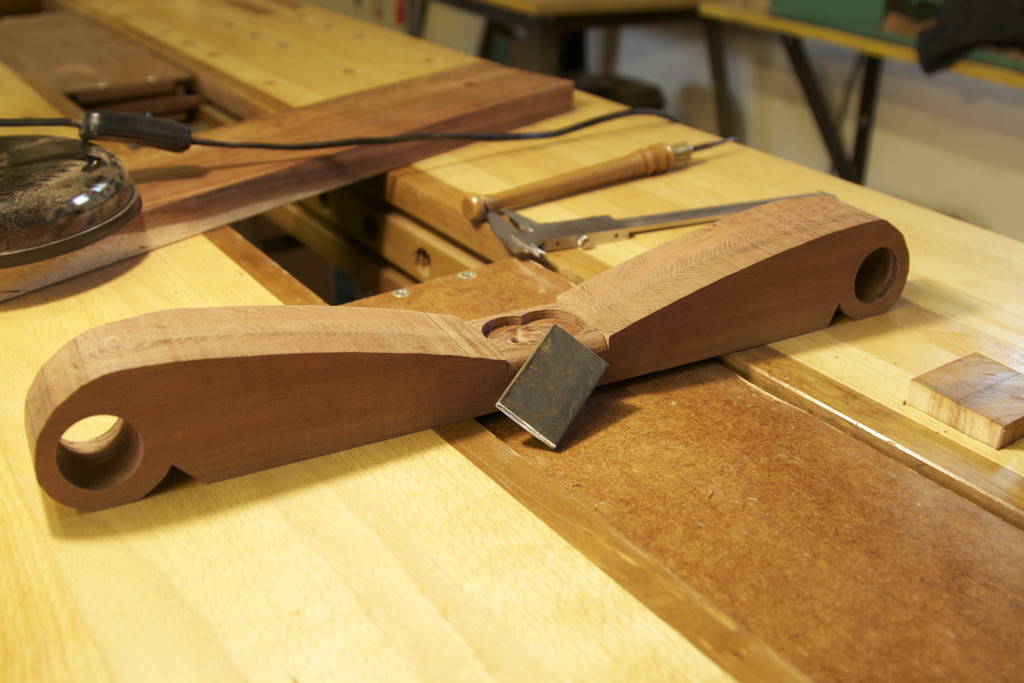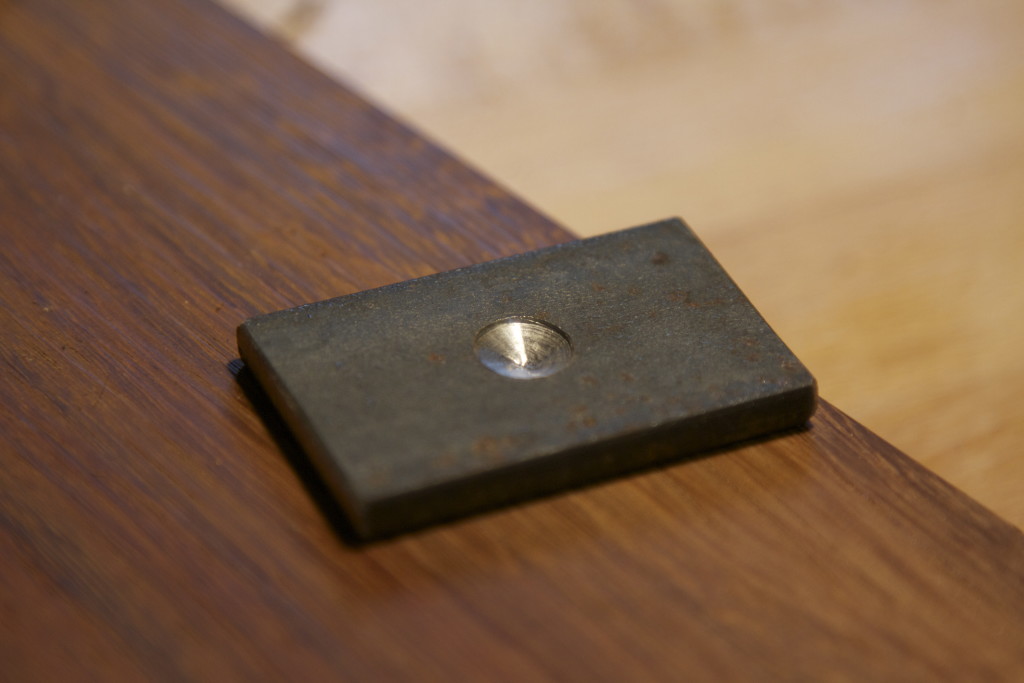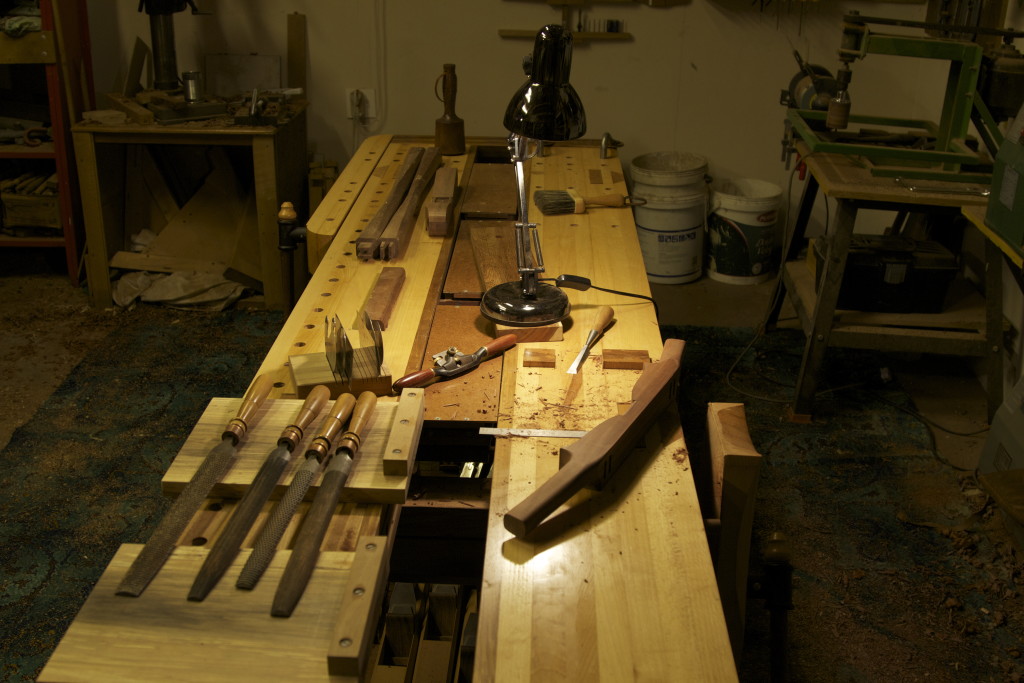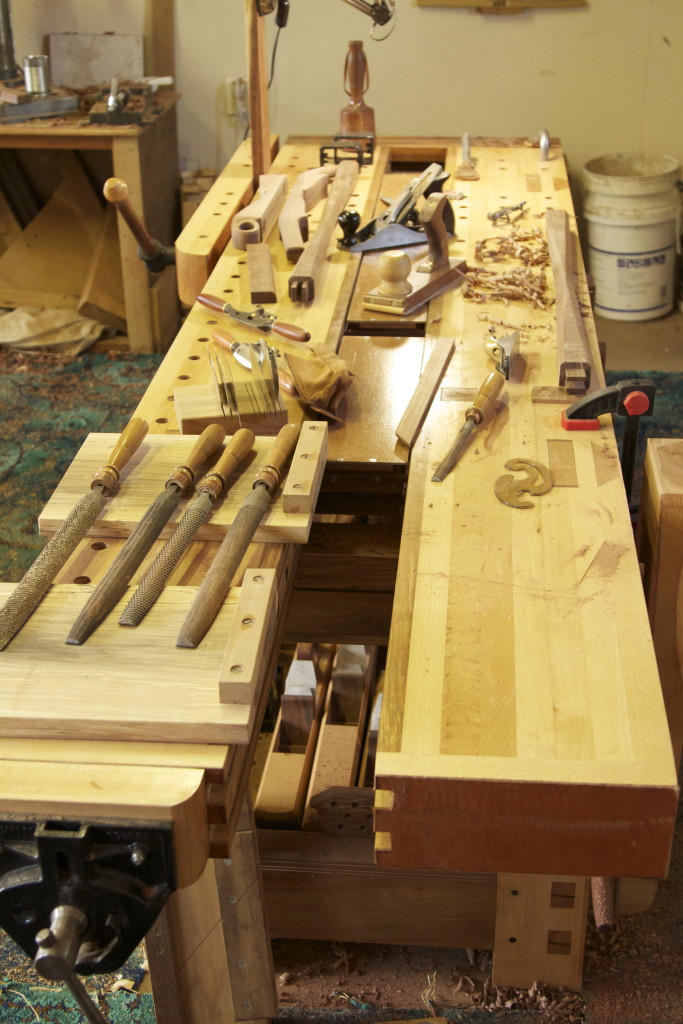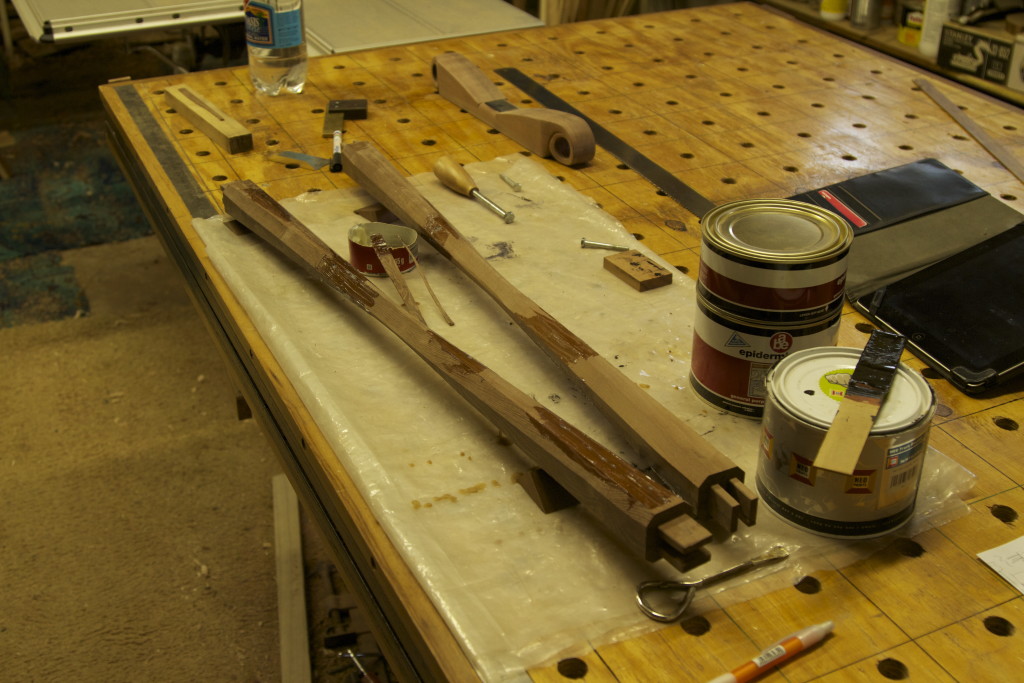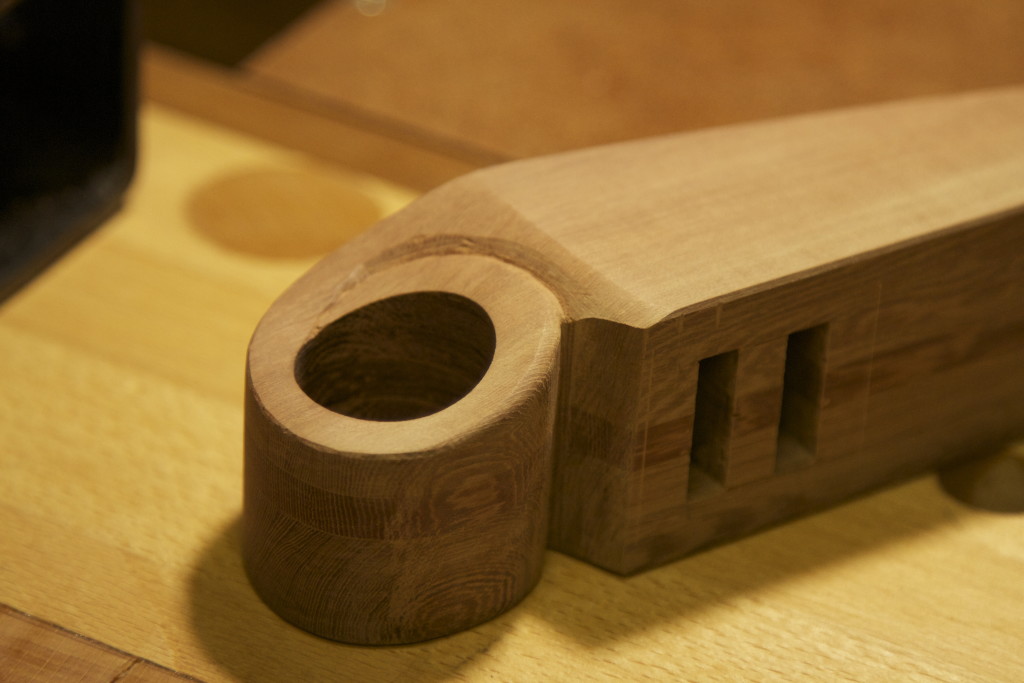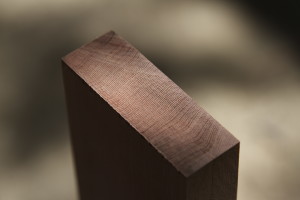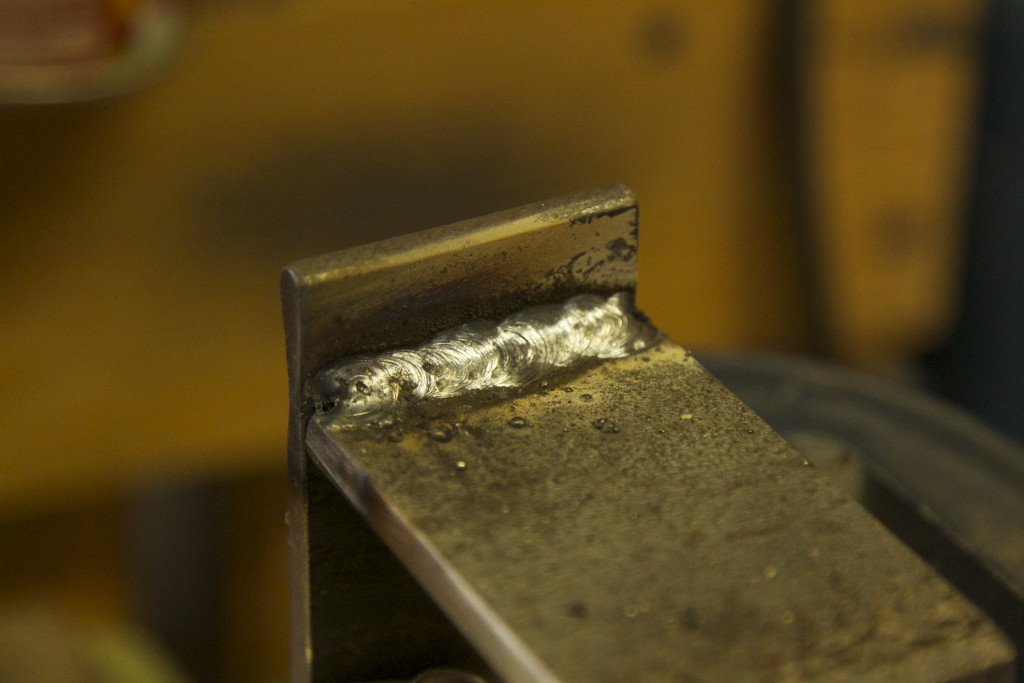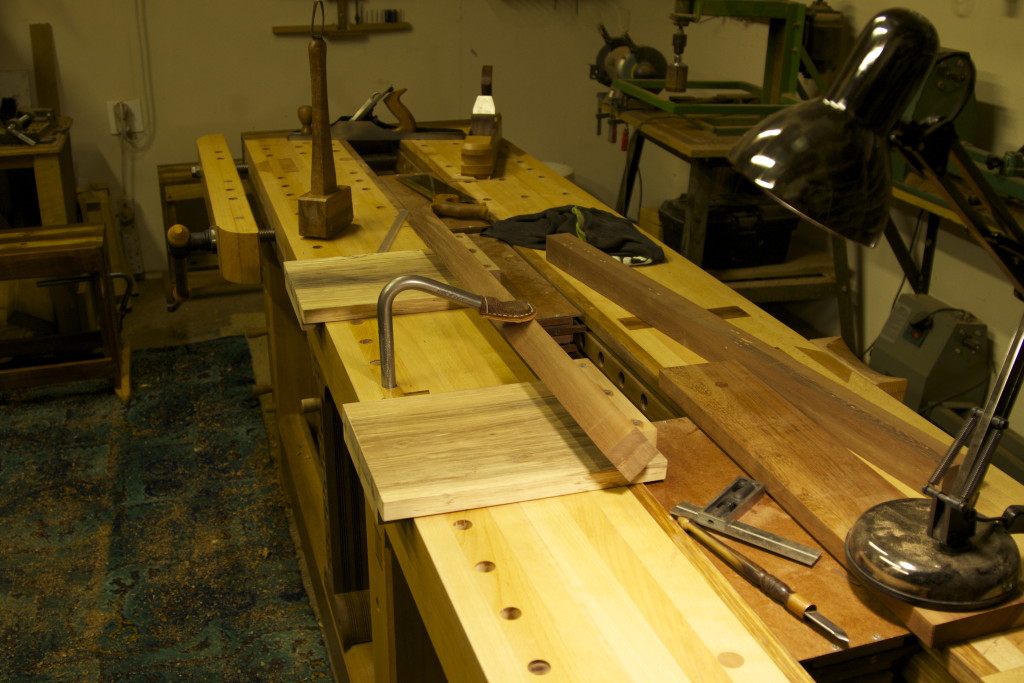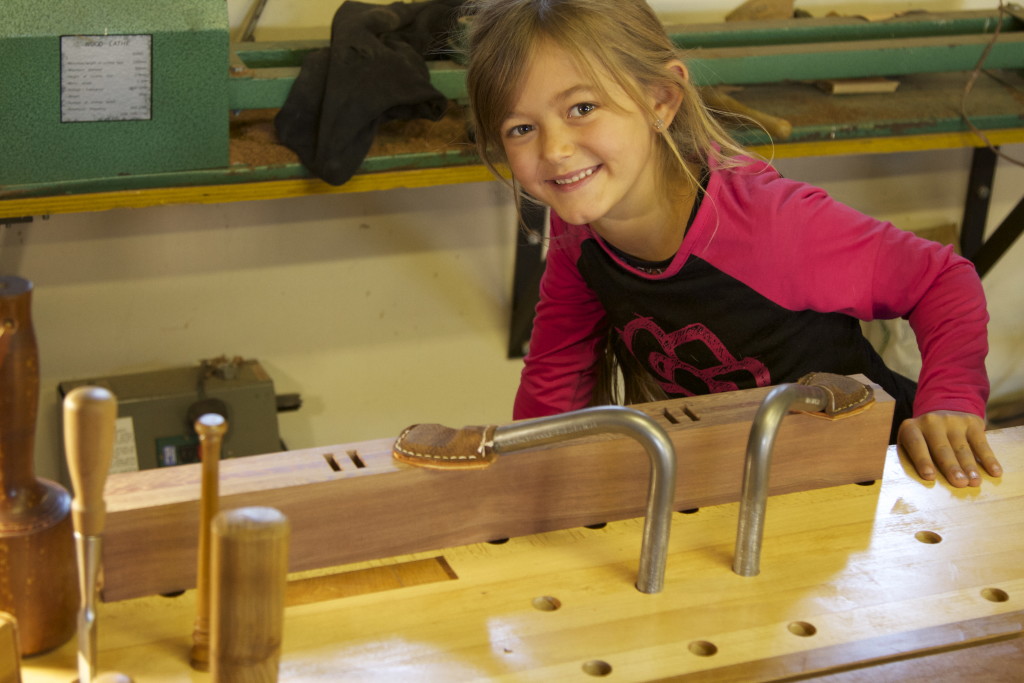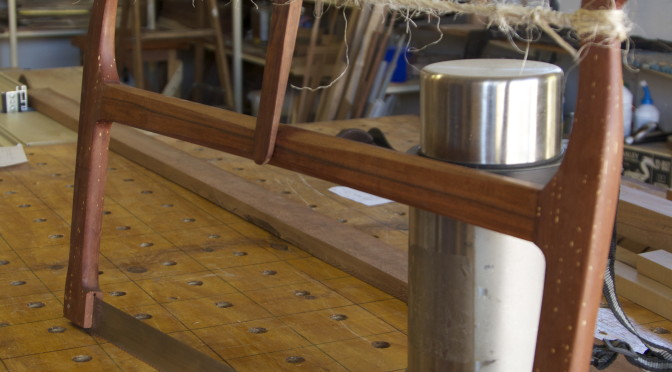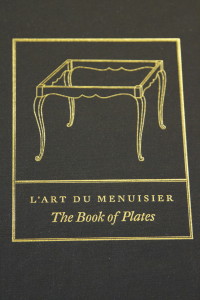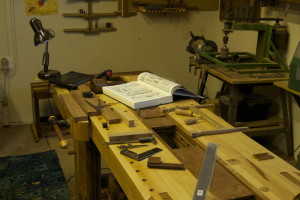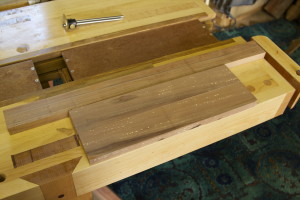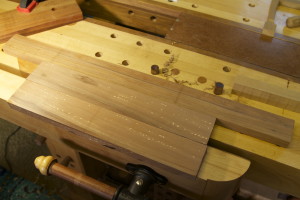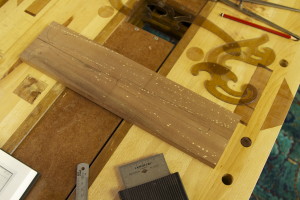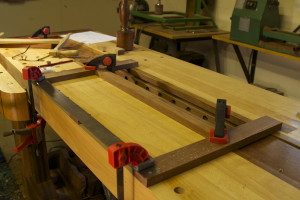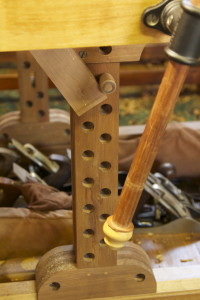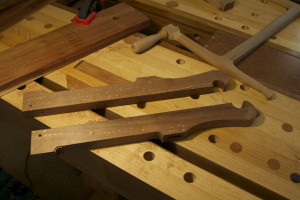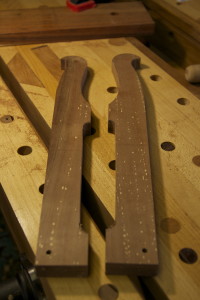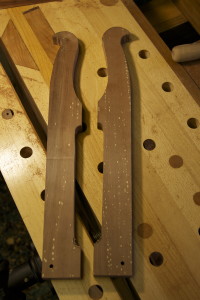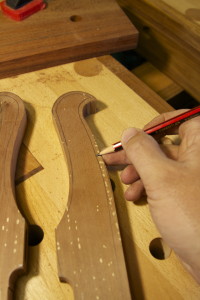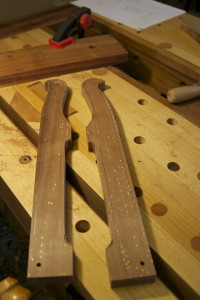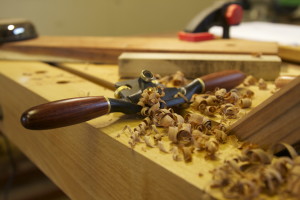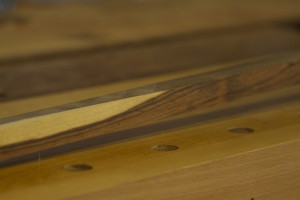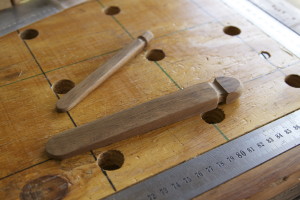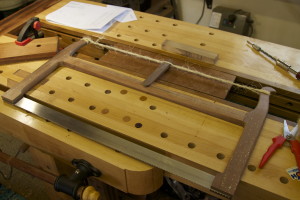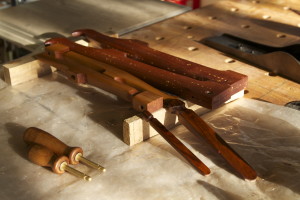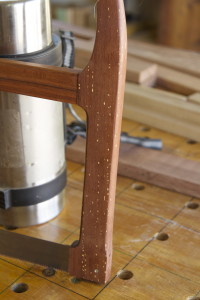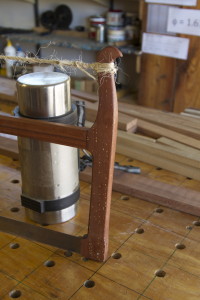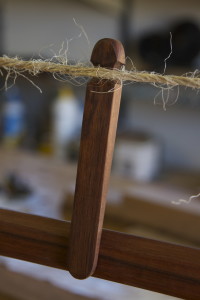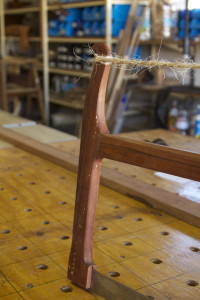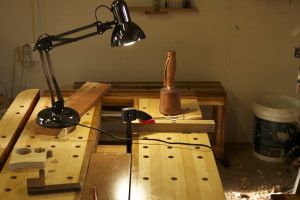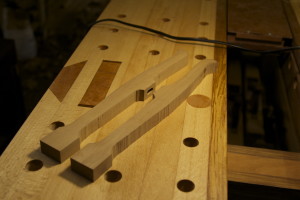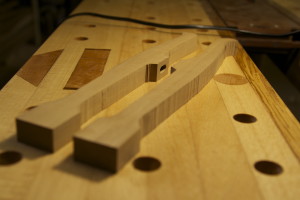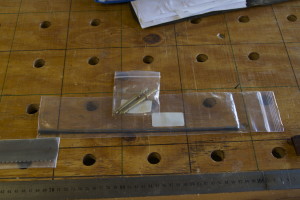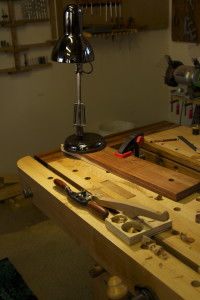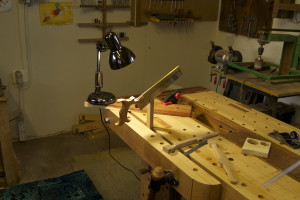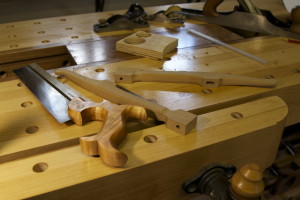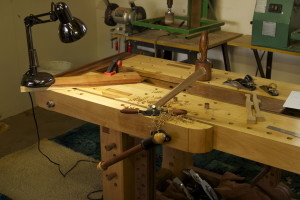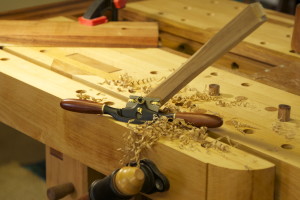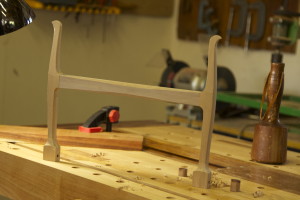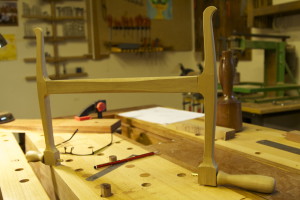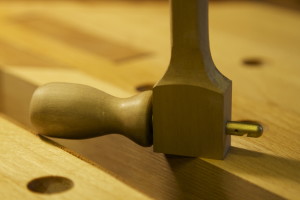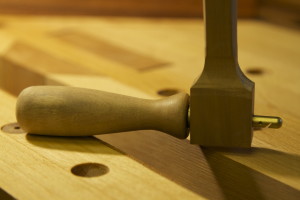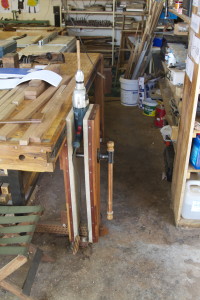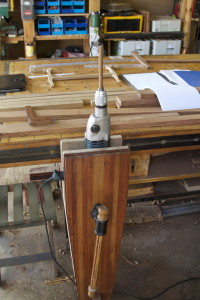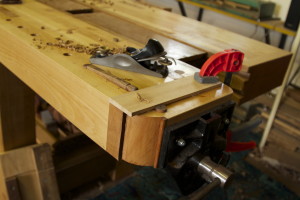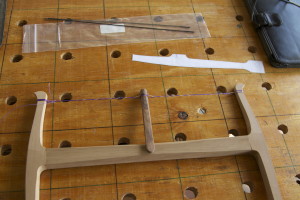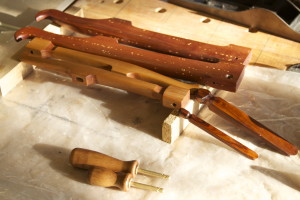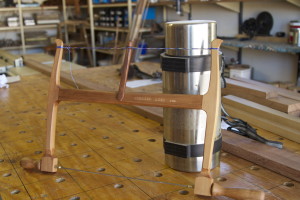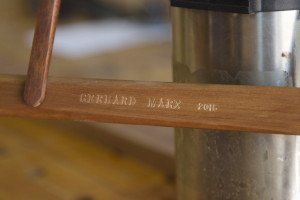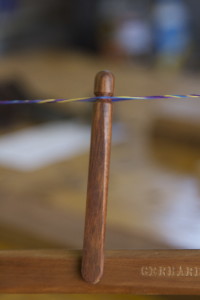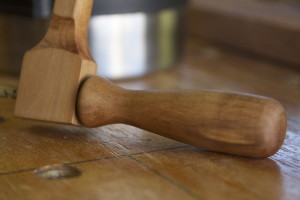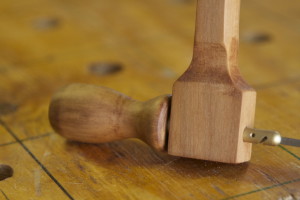18/4/2016
This project has been on my ‘to do’ list for at least two years. Ever since reading the seminal work “By hand & eye”, I just had to build a sector. It really is a magic wand in the shop once you understand a few basics of pre-industrial design methods.
During the Easter break I aquired this broken Danish boxwood rule for R35 (US$2.24) at an antiques shop. I have been looking for something like this for a while, as these rulers have the perfect type of hinge for a shop built sector.
Seeing that one needs to mark out measurements on the sector, I decided to use a light coloured wood. I found this piece of Olienhout (Olea europaea africana or Wild olive) that would have been harvested between 1988 and 1992 on a farm in the Groot Marico district. My father was building Grandfather Clocks at the time and one of his best clients (as well as a personal friend) supplied him with Olienhout from his farm. This is a piece that was left over from that era.
I can still remember driving to Groot Marico with my father to deliver a Grandfather clock to this guy called Oom Frik. Oom Frik purchased at least four of these clocks over the years and paid for it in part by supplying my father with the most magnificent Olienhout. On the way there we stopped at the Hotel in Groot Marico to sample some of the local mampoer that the area is famous for. When the barman heard that it was my first visit to Groot Marico, he explained that it is custom for first time visitors to be served a glass of the local elixir on the house. Being a student at the time, I needed no further convincing so he proceeded to fill a tumbler with crushed ice followed by more than a sensible amount of mampoer.
That stuff knocked my socks off to say the least, despite being a fairly fit alcohol consumer at the time. As I sat there sipping the poison, I could swear Oom Schalk Lourens wispered something to me. For those of you who do not know the work of the legendary Herman Charles Bosman, do yourself a favour and read (at the very least) “Mafeking Road & other stories” (1947). It is arguably the best literature ever to come out of Southern Africa and it will make Groot Marico and the Afrikaner come alive to you. I digress, but as a last thought on the matter I will leave you with a quote from Bosman where he described Groot Marico “There is no other place I know that is so heavy with atmosphere, so strangely and darkly impregnated with that stuff of life that bears the authentic stamp of South Africa”.
Anyway this piece of wood comes from that area, has been lying around for at least 25 years since being harvested and was most definitely enjoying those beautiful Bosveld sunsets with Oom Schalk Lourence at the time Bosman was writing his epic stories.
On the table saw I ripped 6 thin strips from the side with the lightest coloured wood. Two of those were milled down to the exact thickness of the boxwood rule.
I then got rid of the broken hinges.
I planed the boxwood very carefully to expose fresh wood for the adhesive to bind to.
The strips of Olienhout were then glued up as so …
After removing excess glue and squaring up, I had two extensions with perfect slots to accommodate the rule.
The rule was then epoxied into position.
16/5/2016
At this stage I first marked out the divisions on the inside surface of the arms. I decided on 25 mm divisions which gave me 24 of them on each arm of this sector.
I then shaped the arms as shown below to make the sector lighter and enhance it’s visual appeal.
A pin was added to help keep it straight and lined up while stored.
I then marked the front faces using the inside markings as a reference. The numbers were punched in using my number set.
Once punched I added black ink.
That was followed by Woodoc finish.
23/5/2016
There you go, one Olienhout sector from the world of the late great Herman Charles Bosman.


